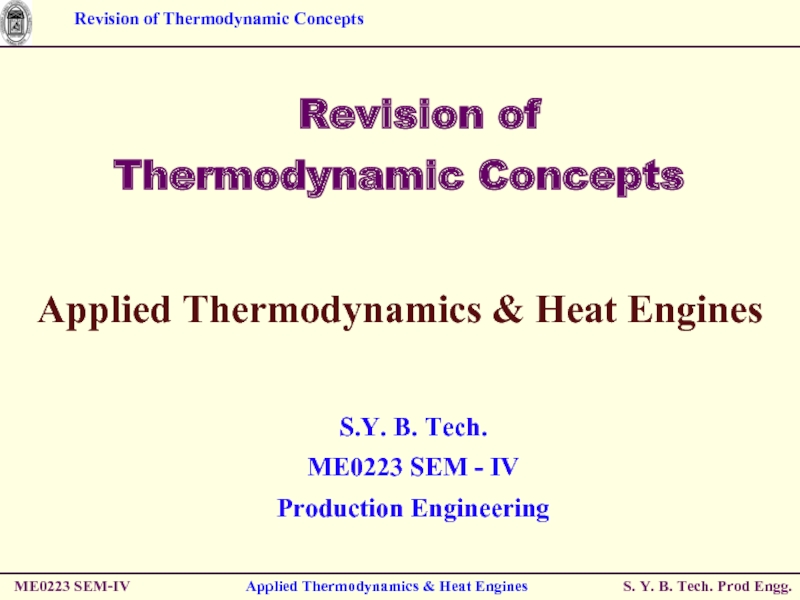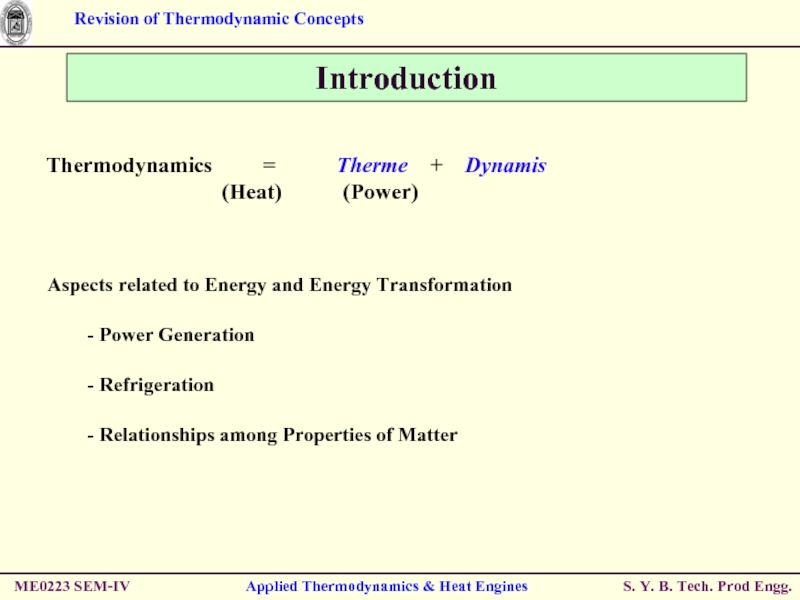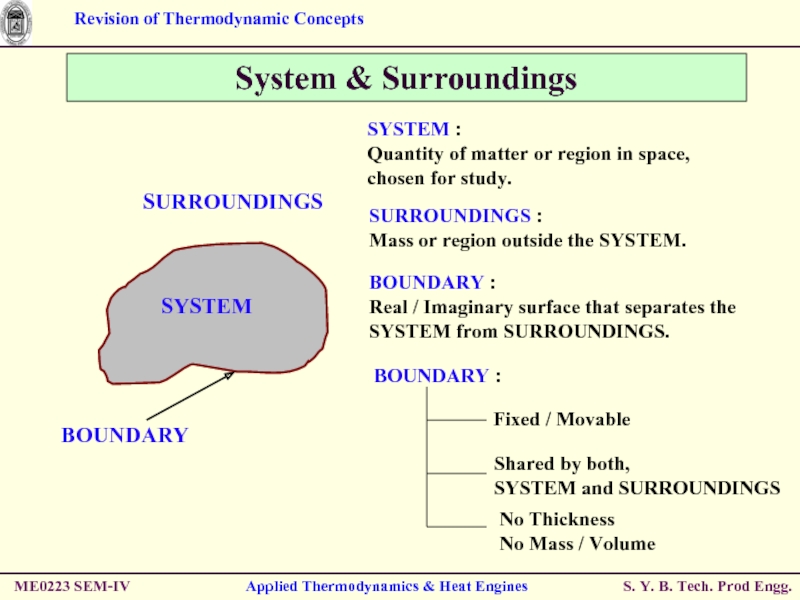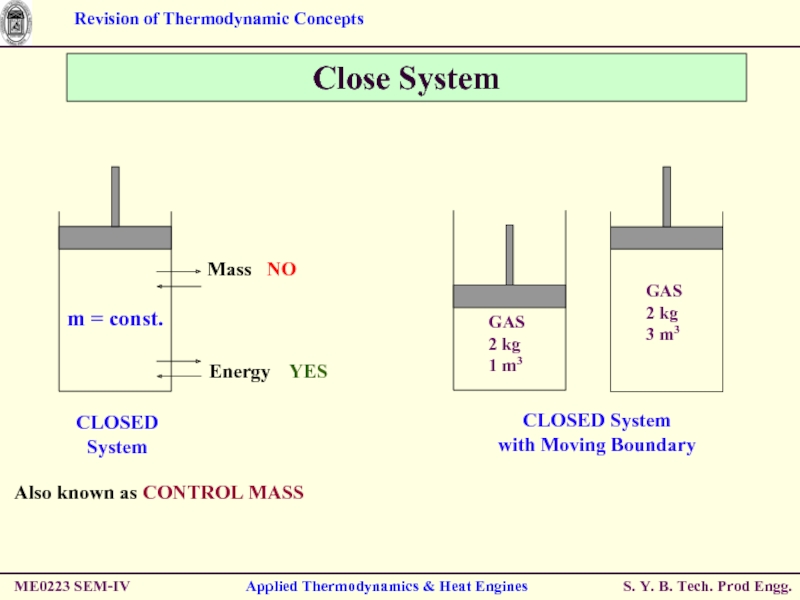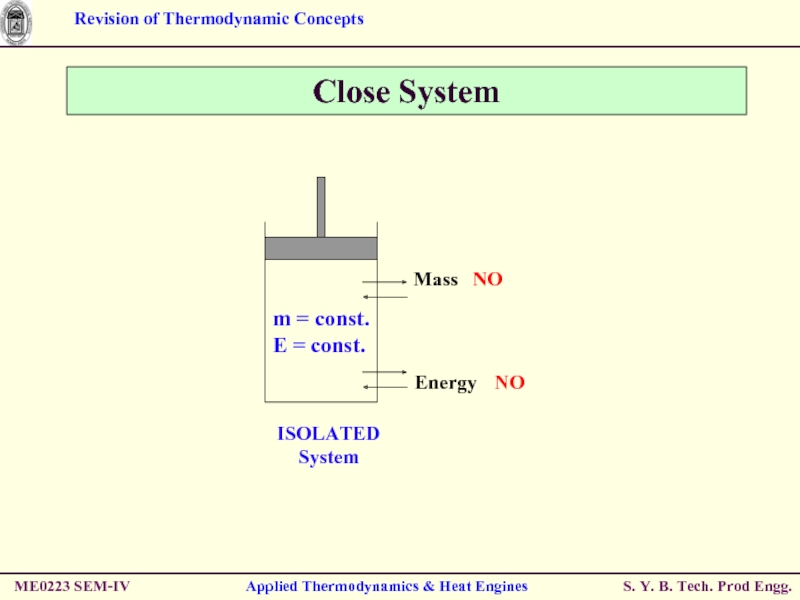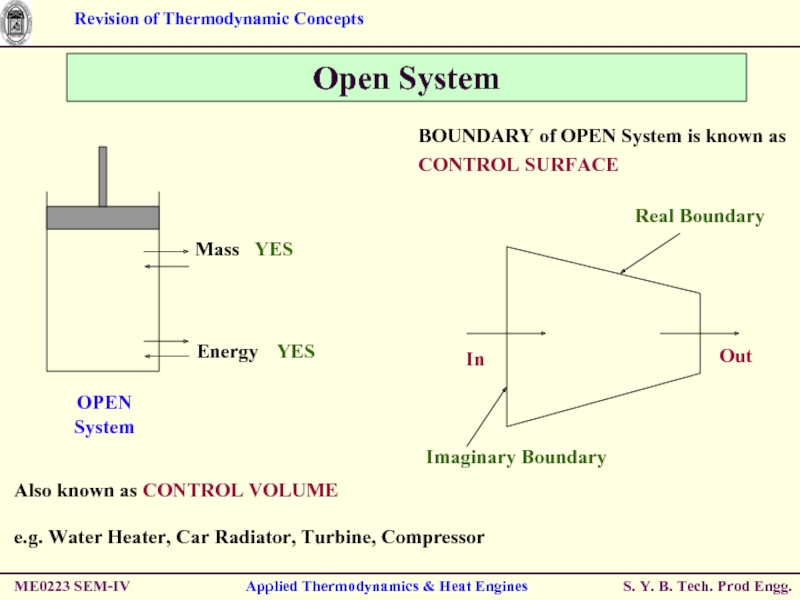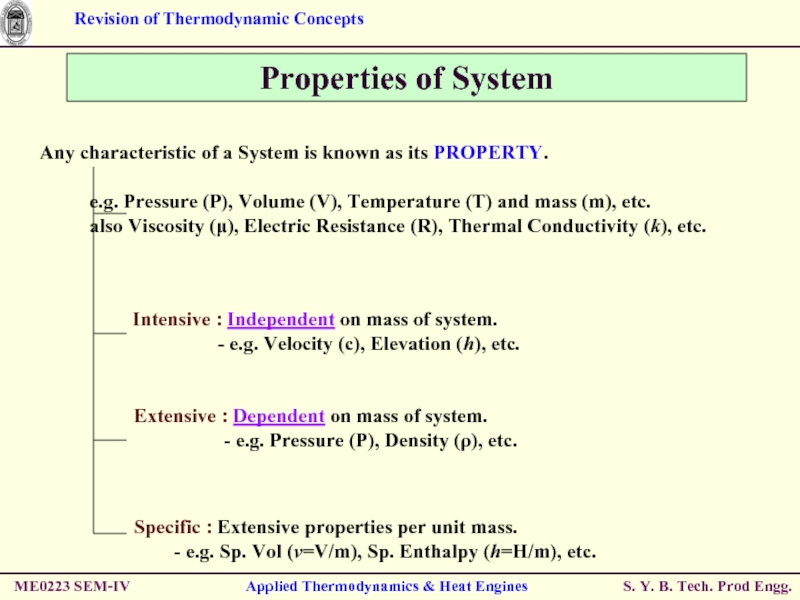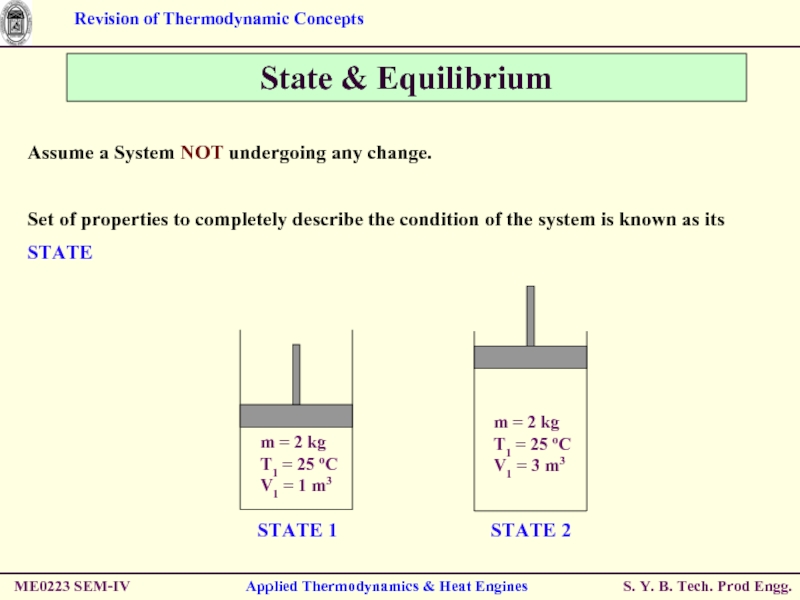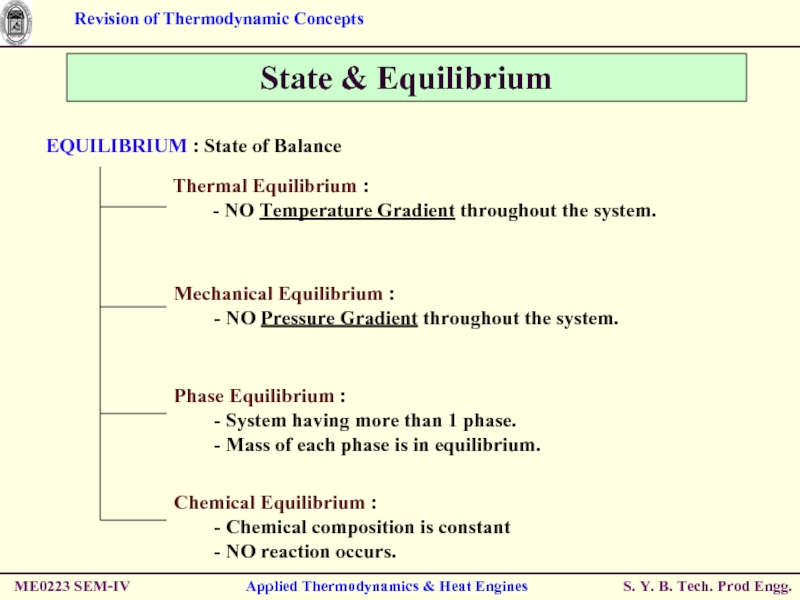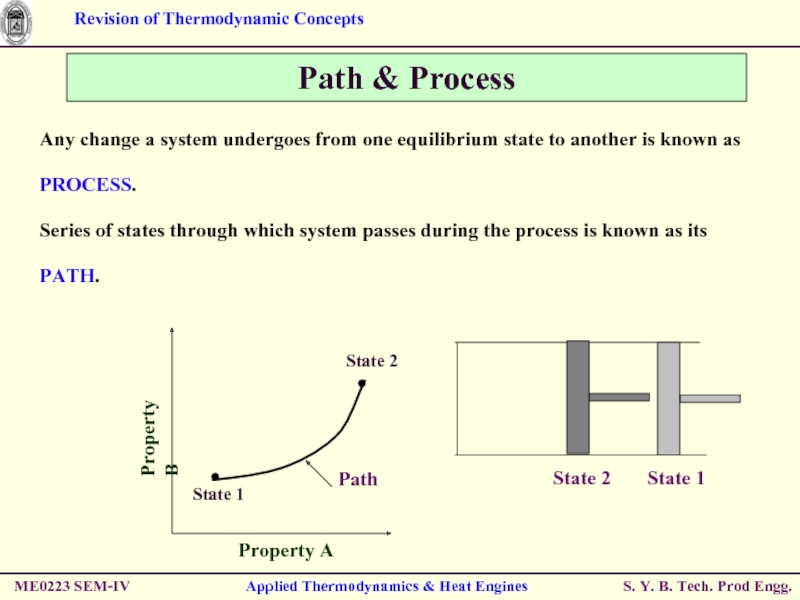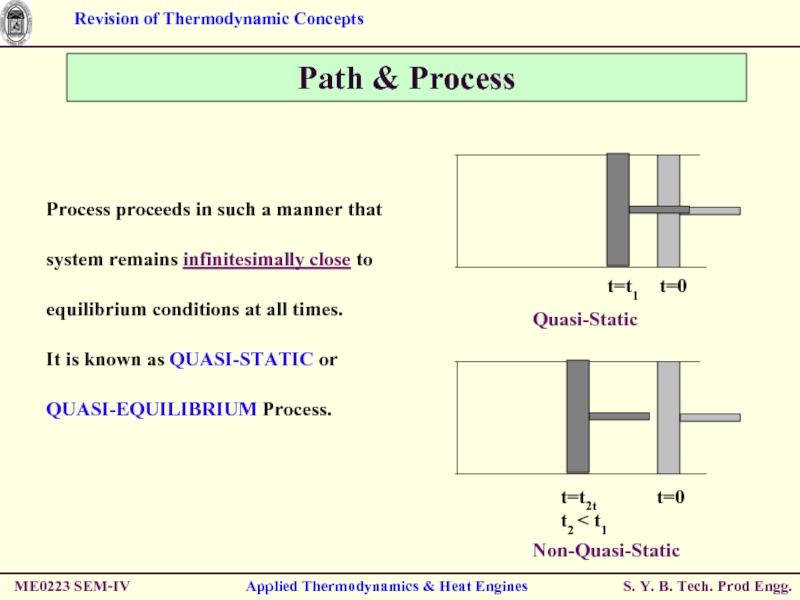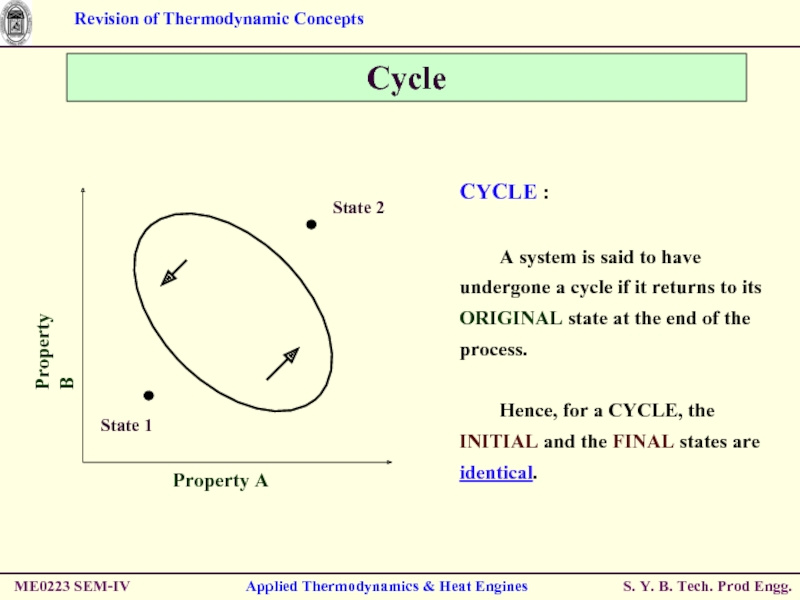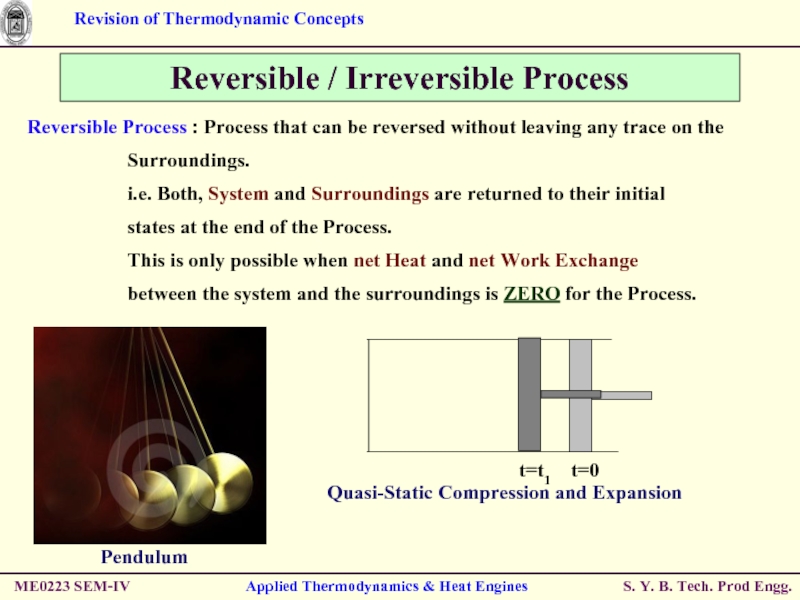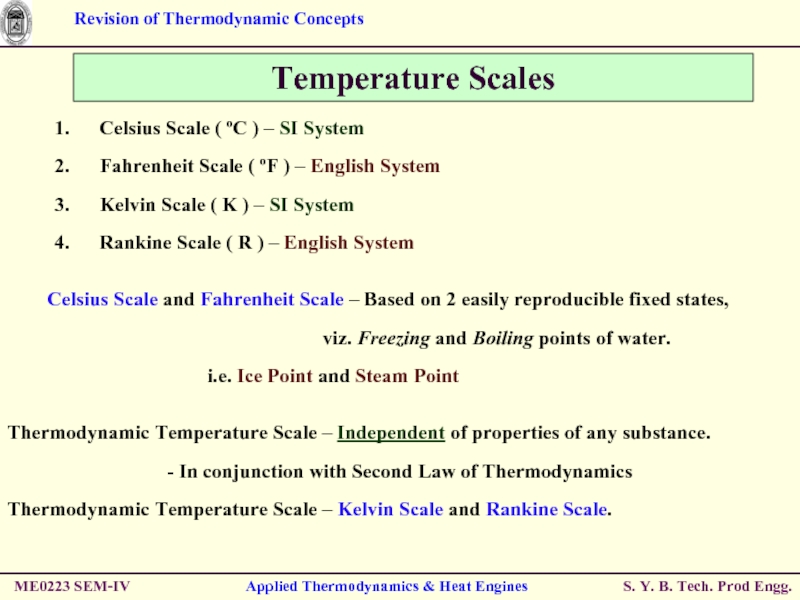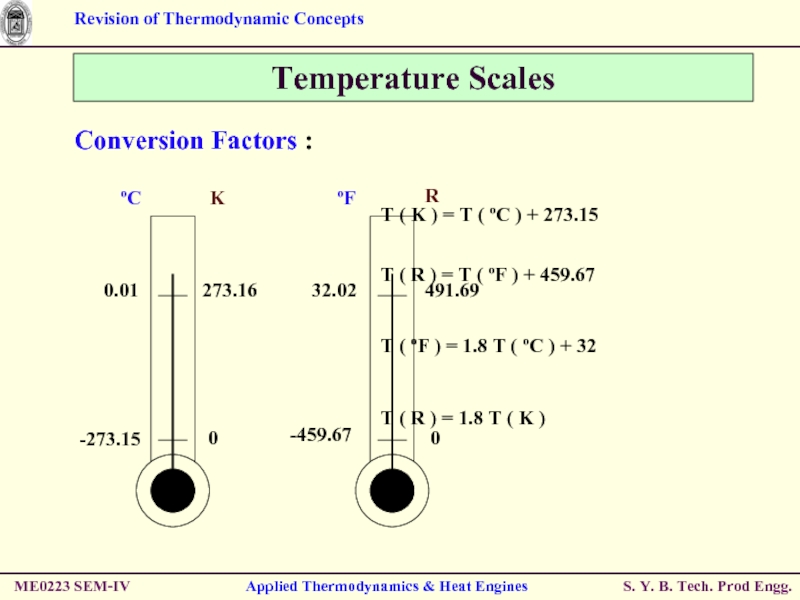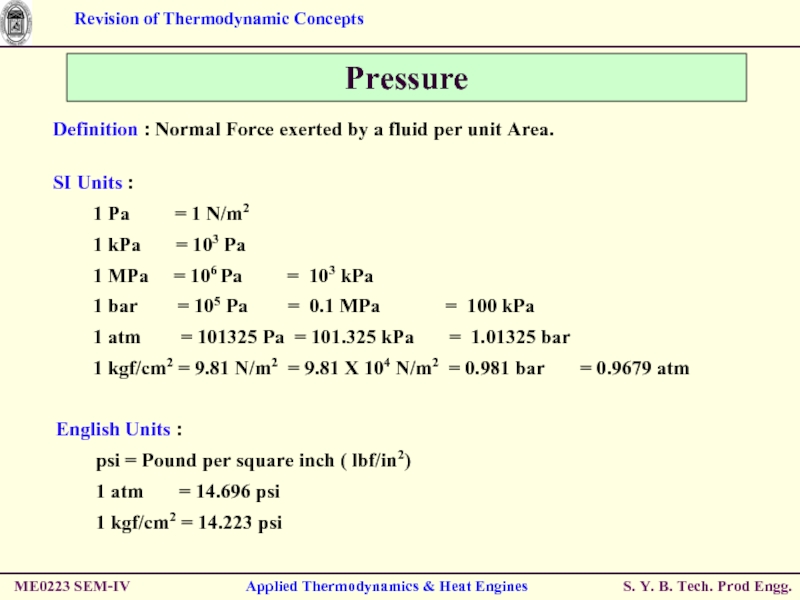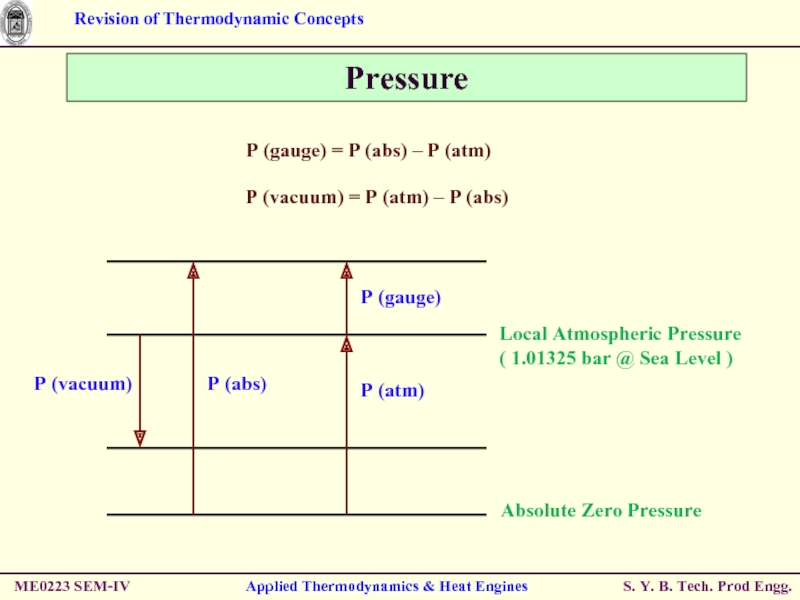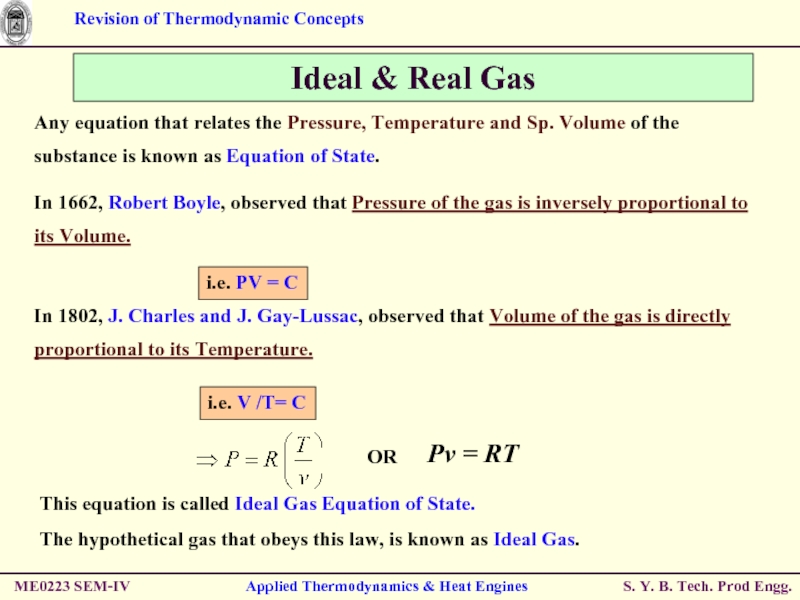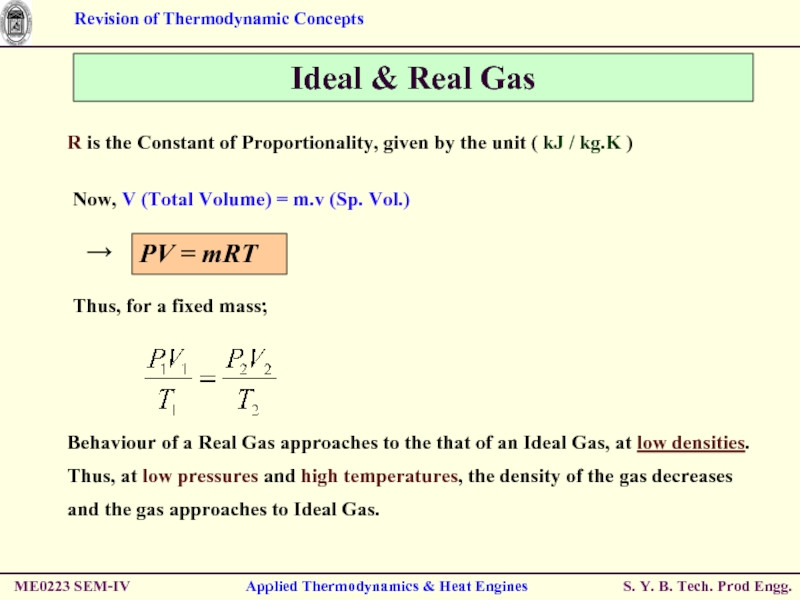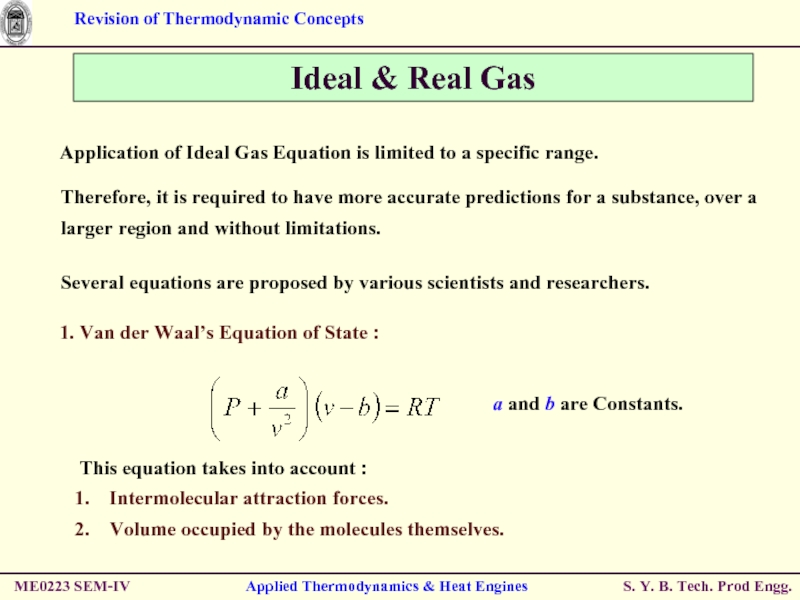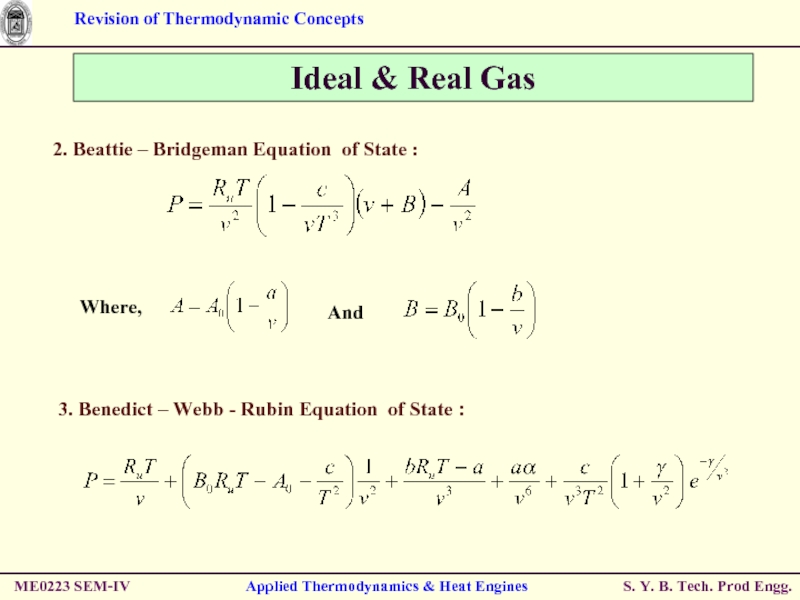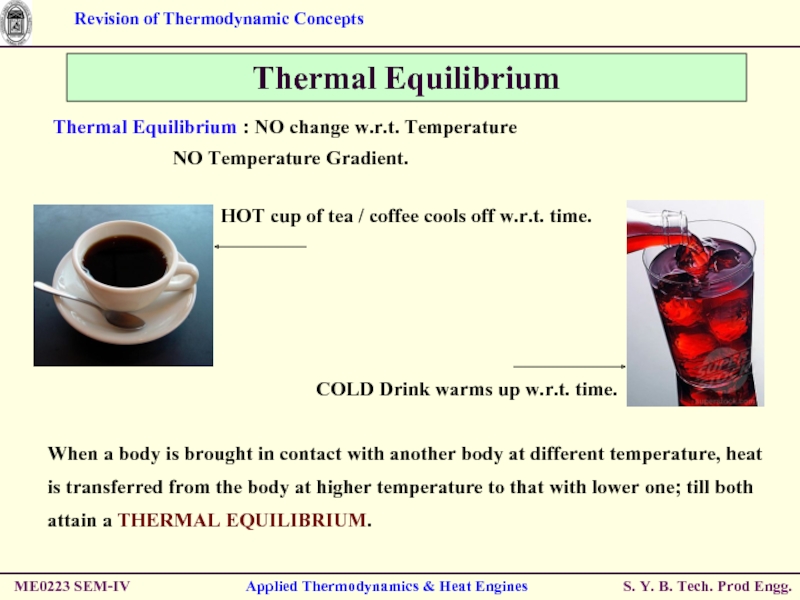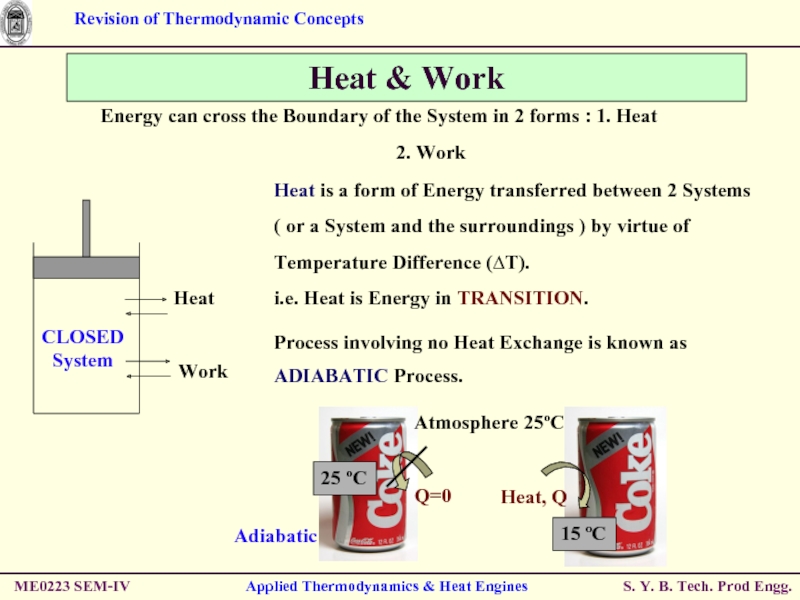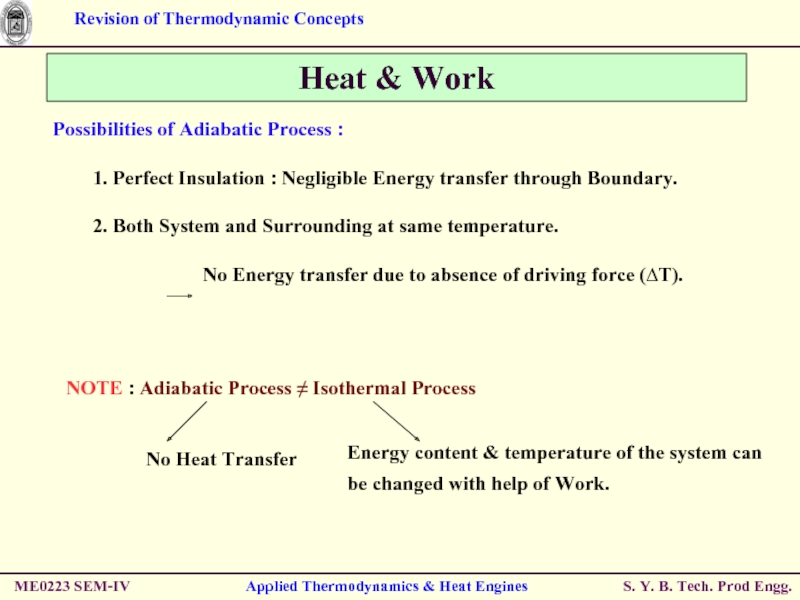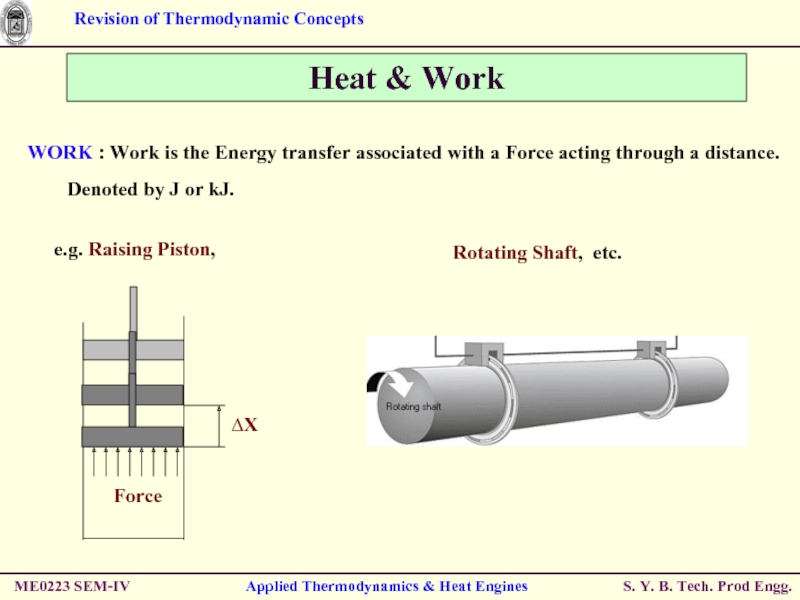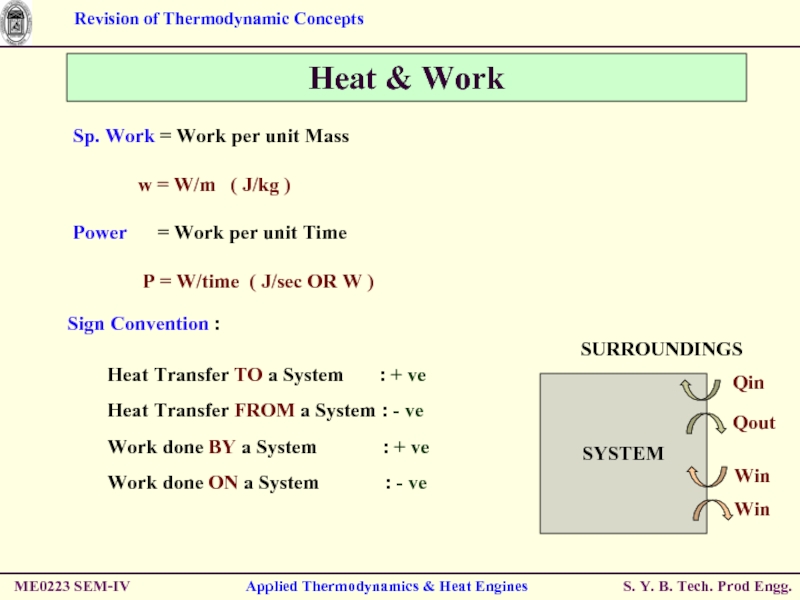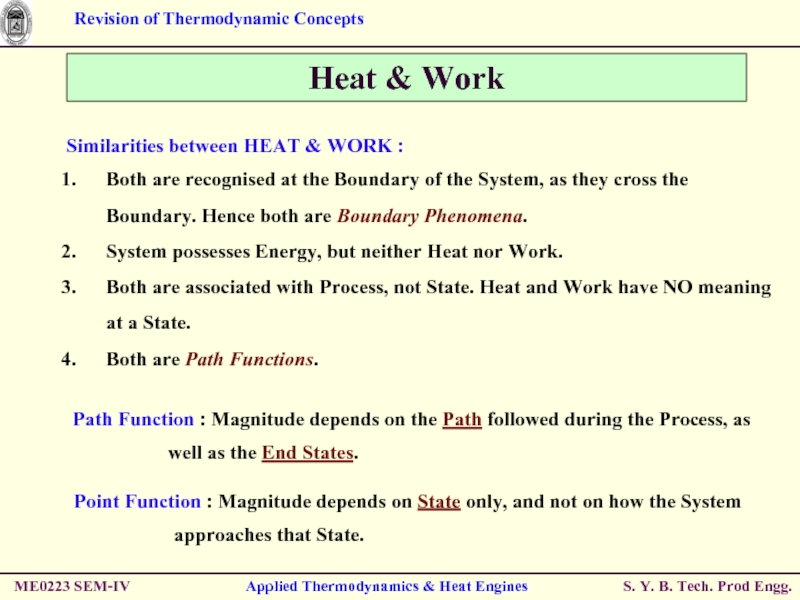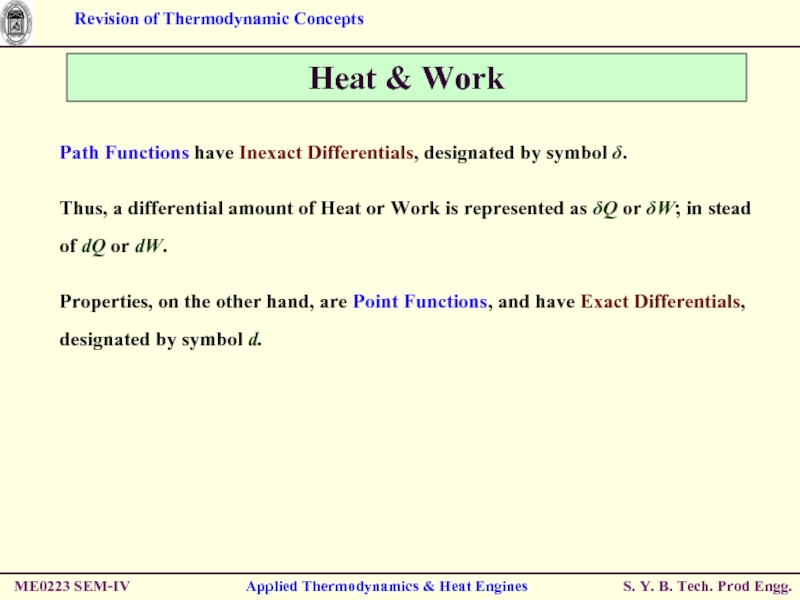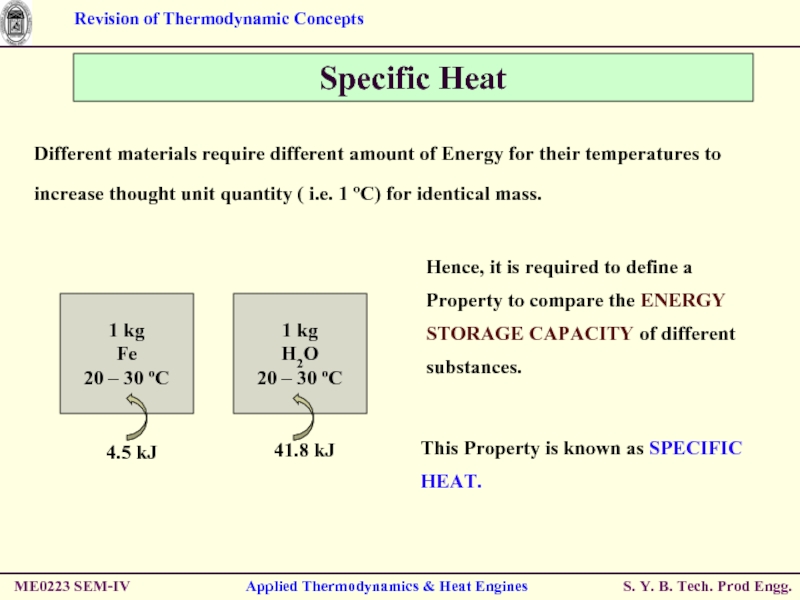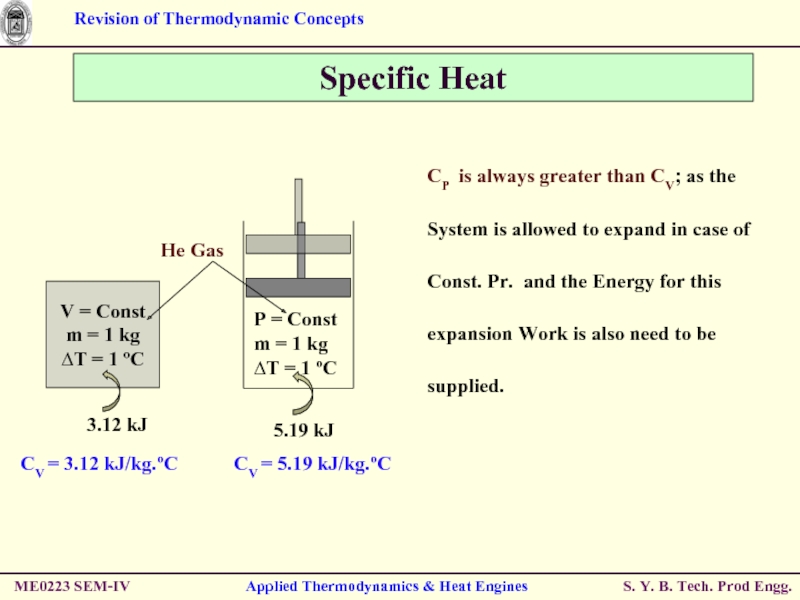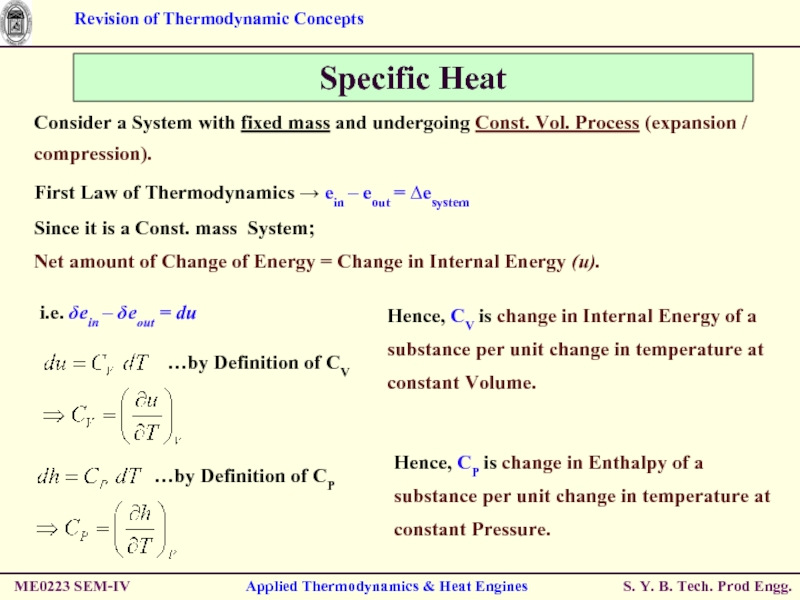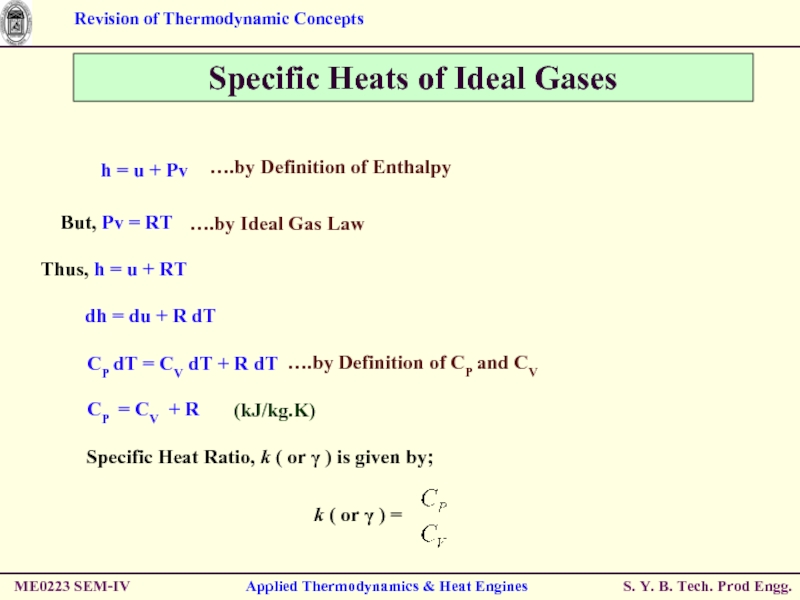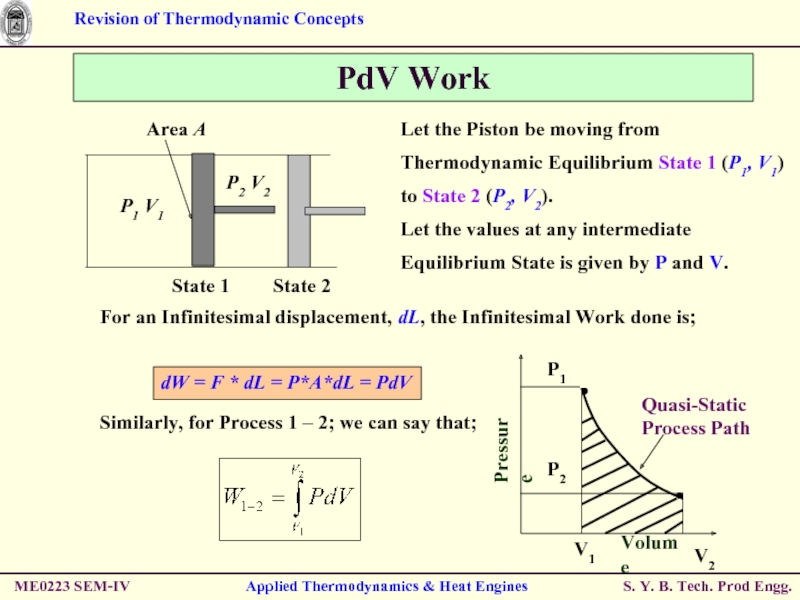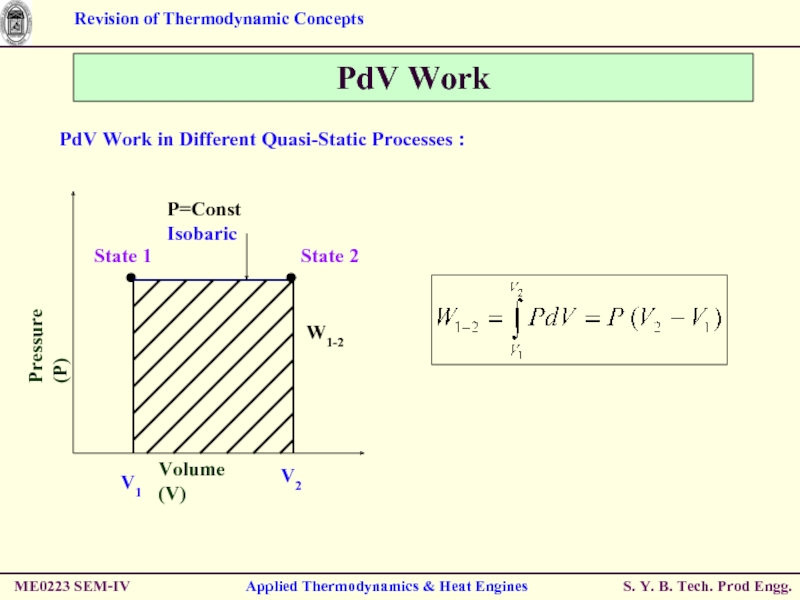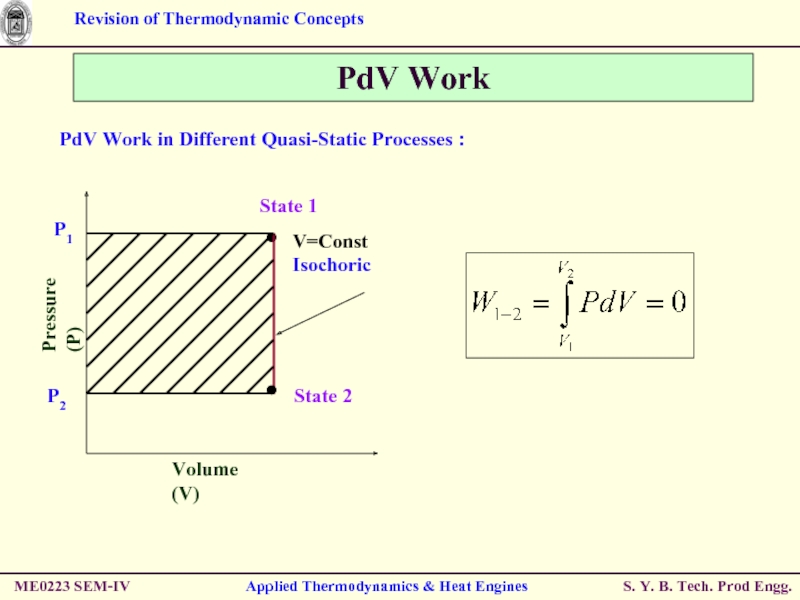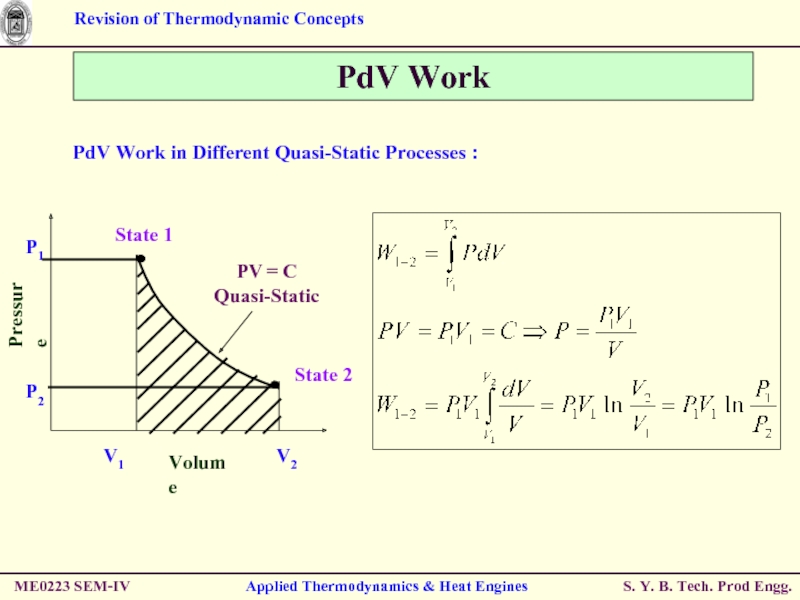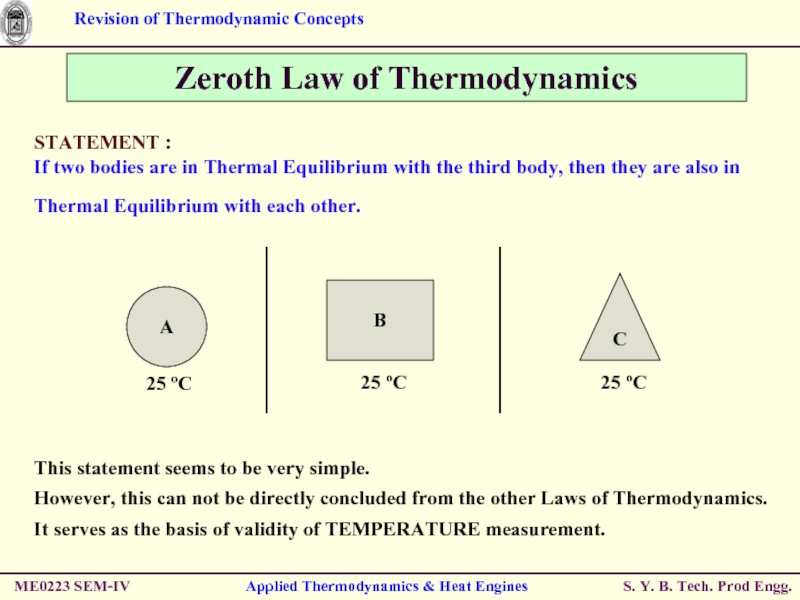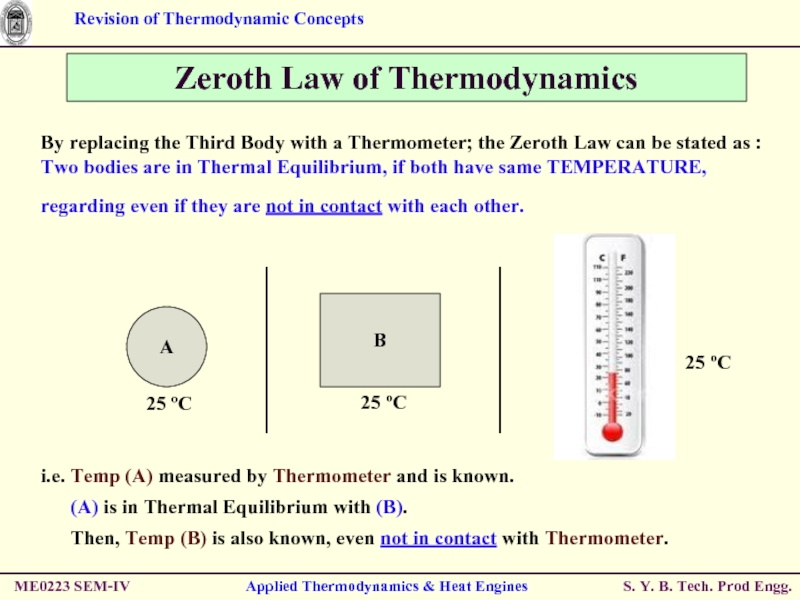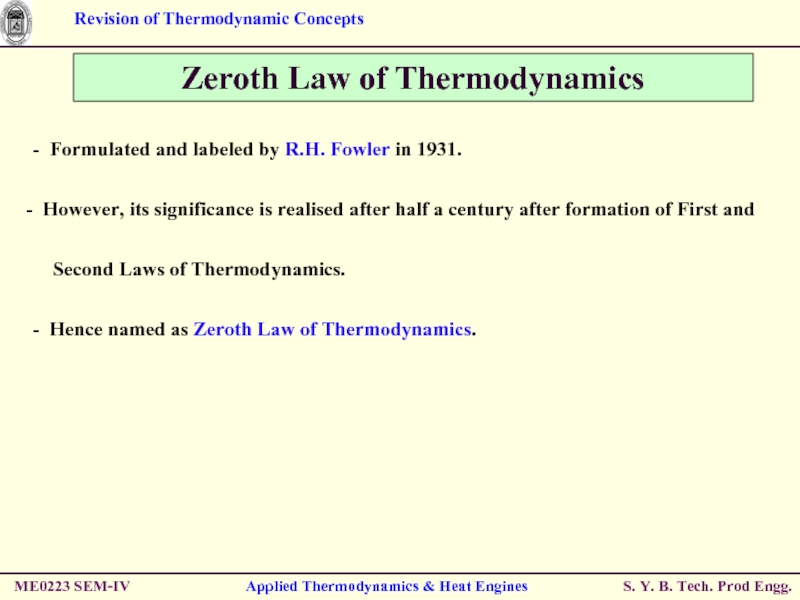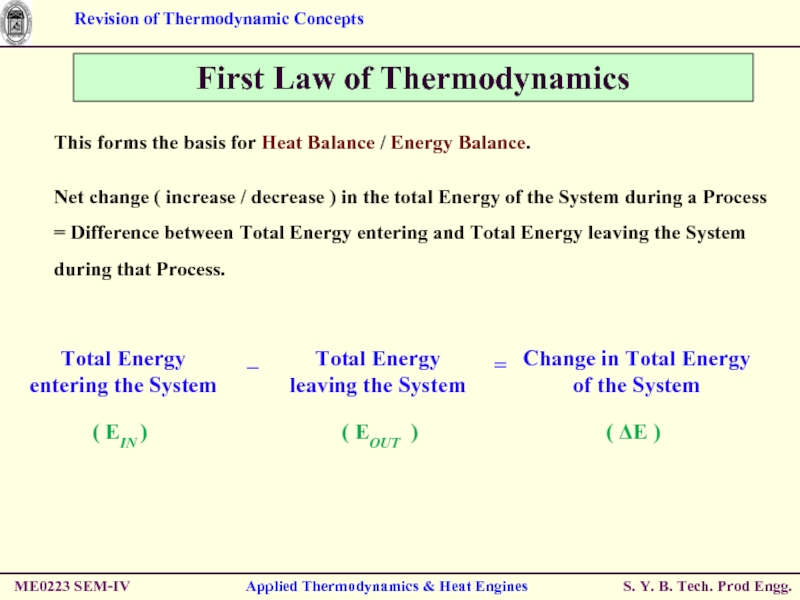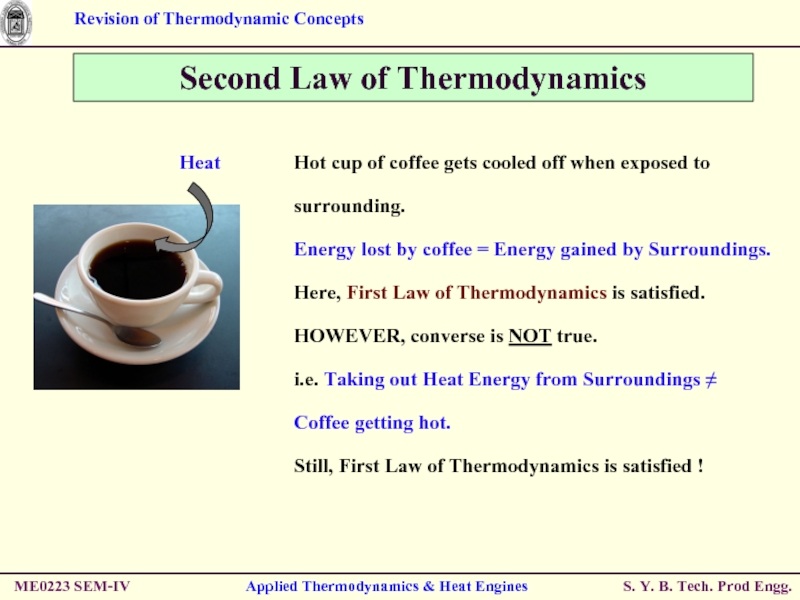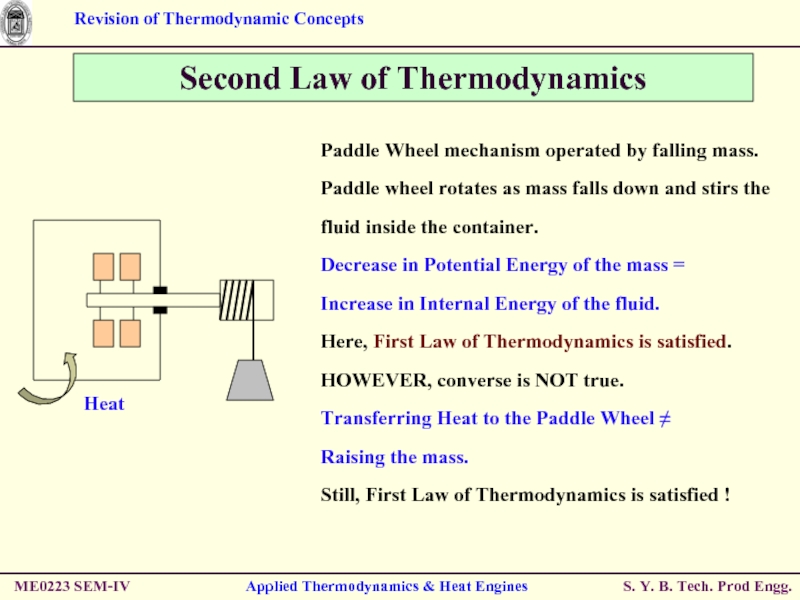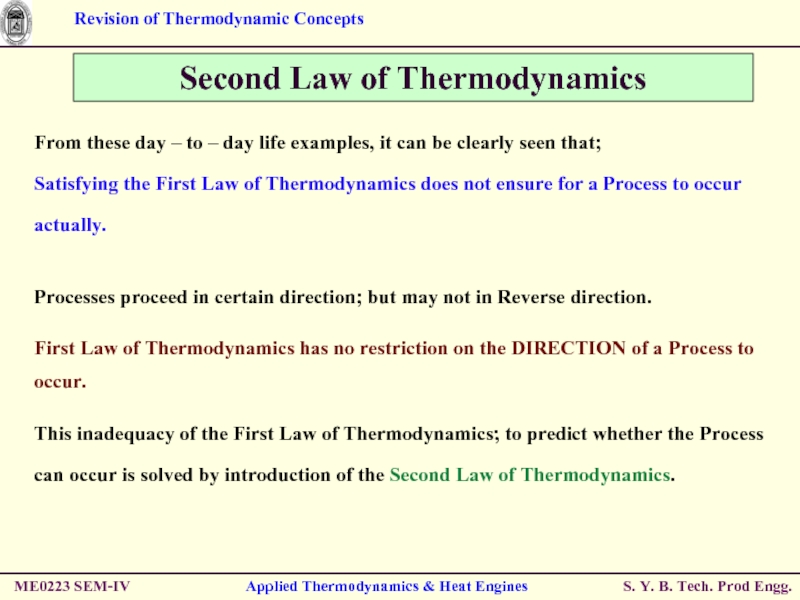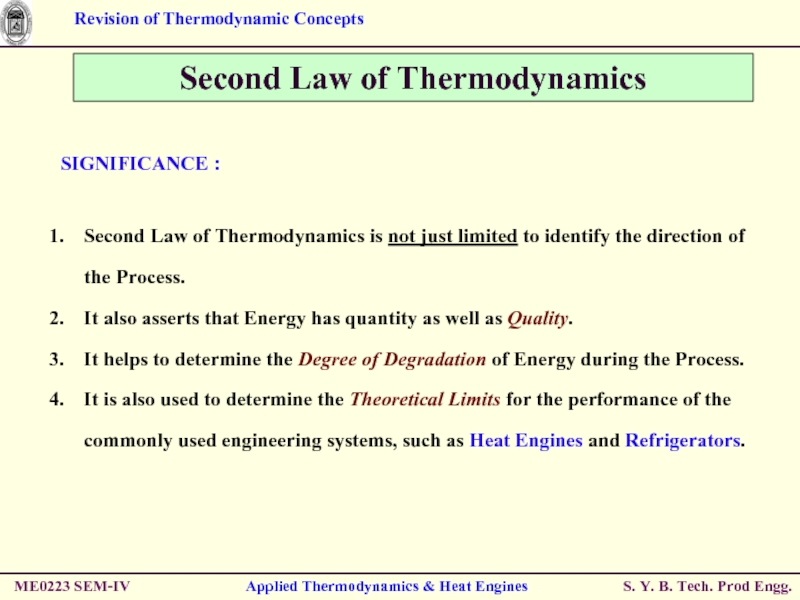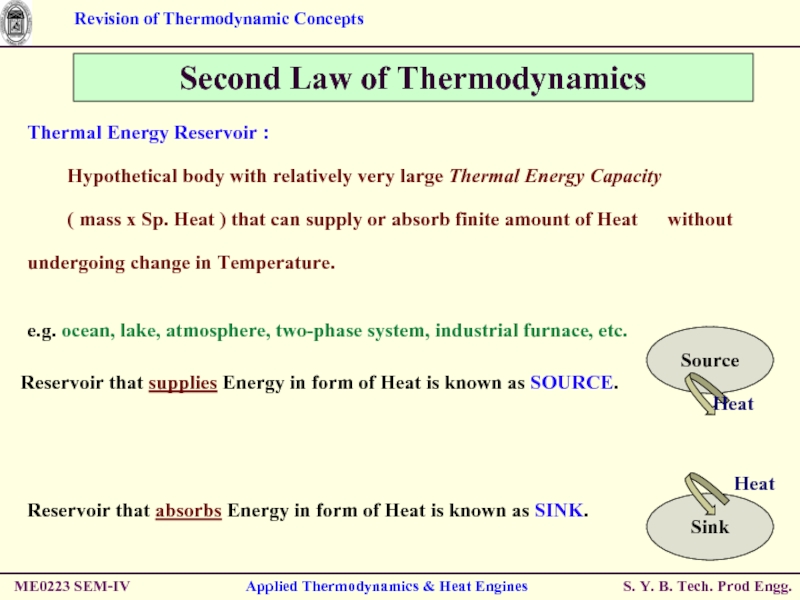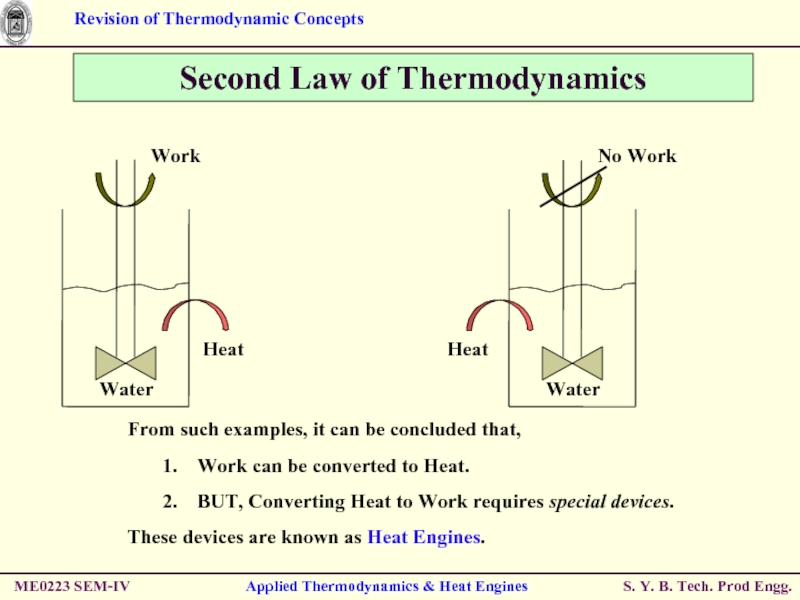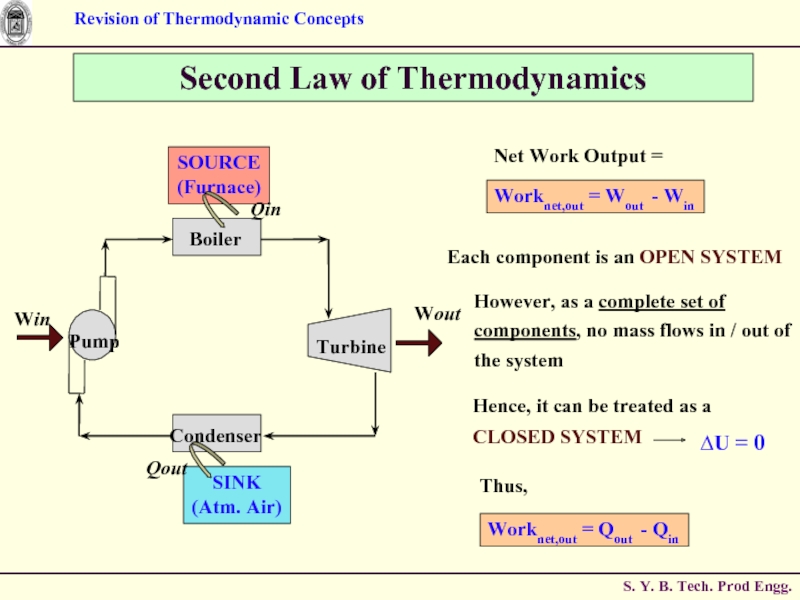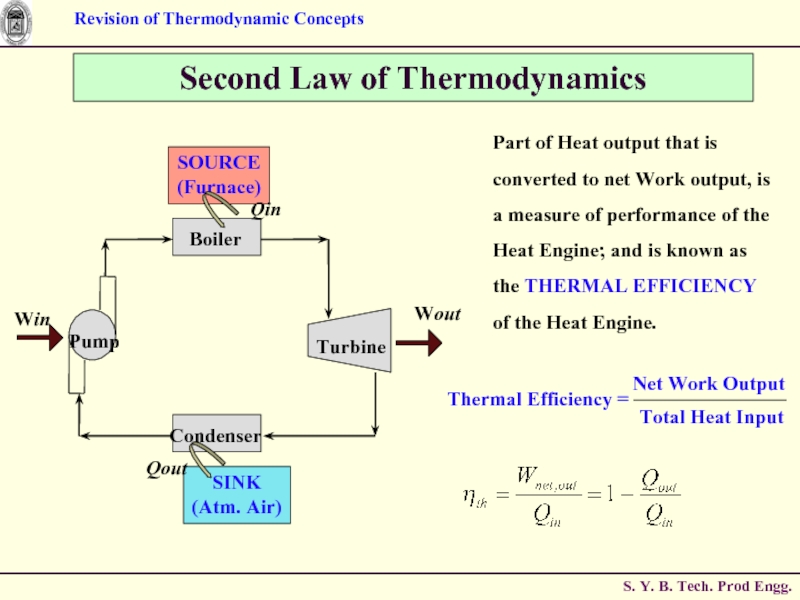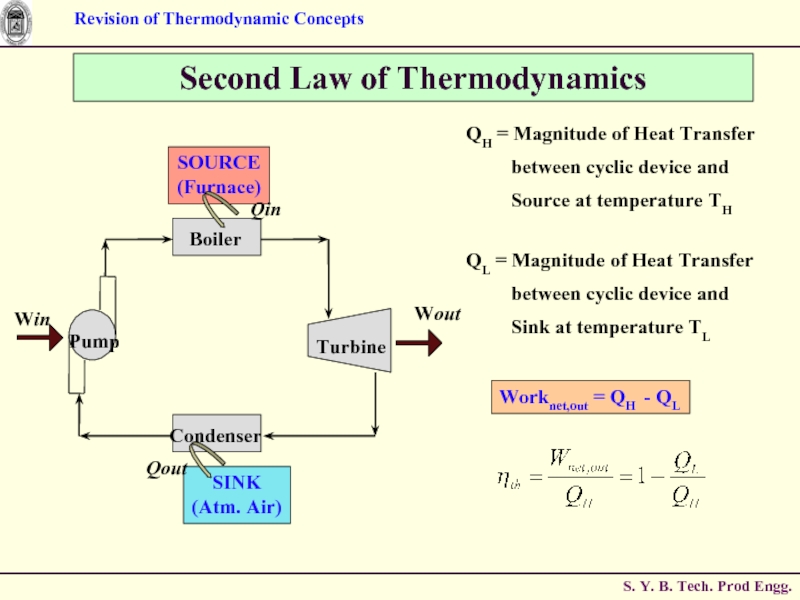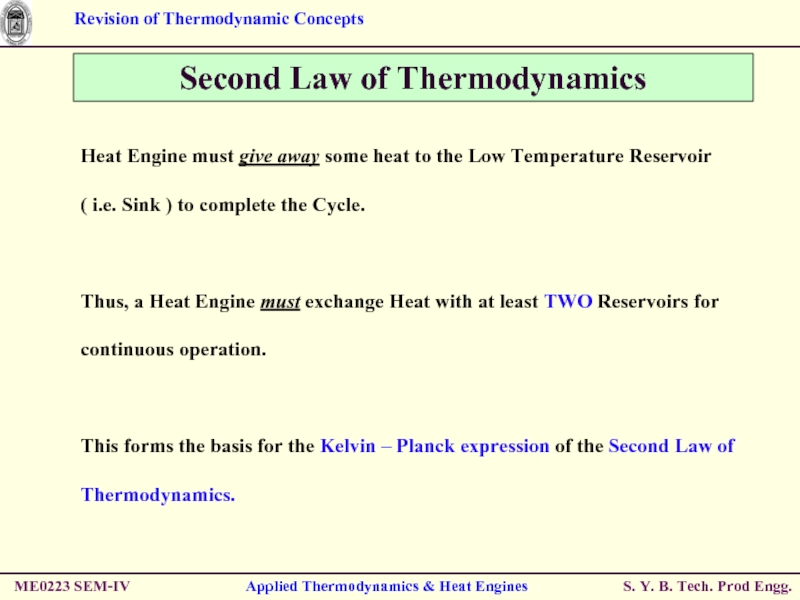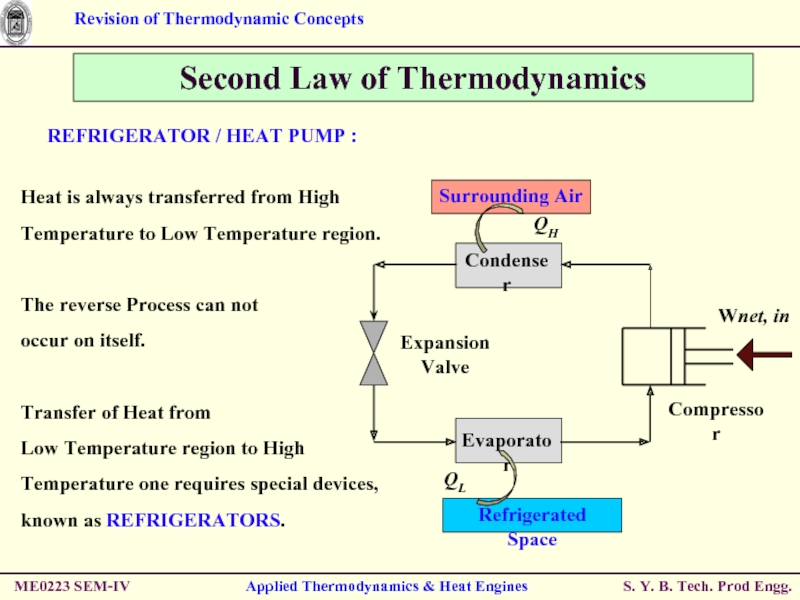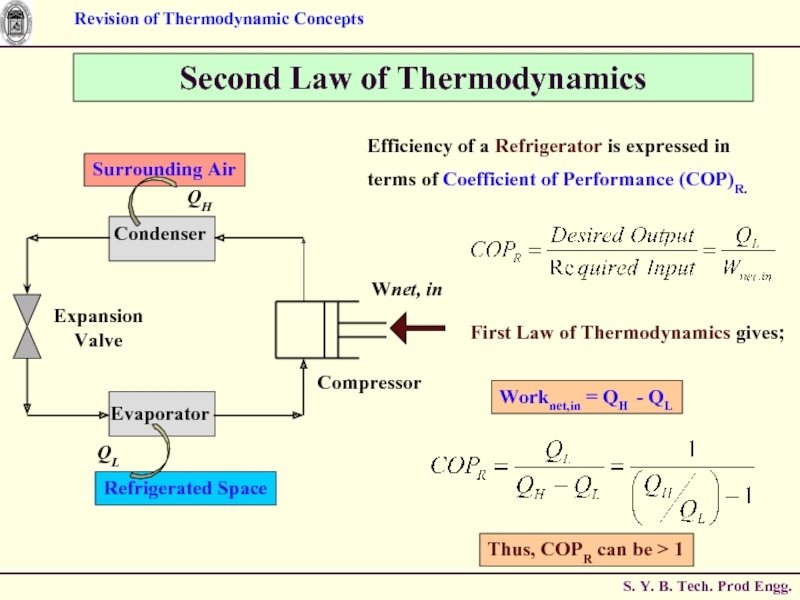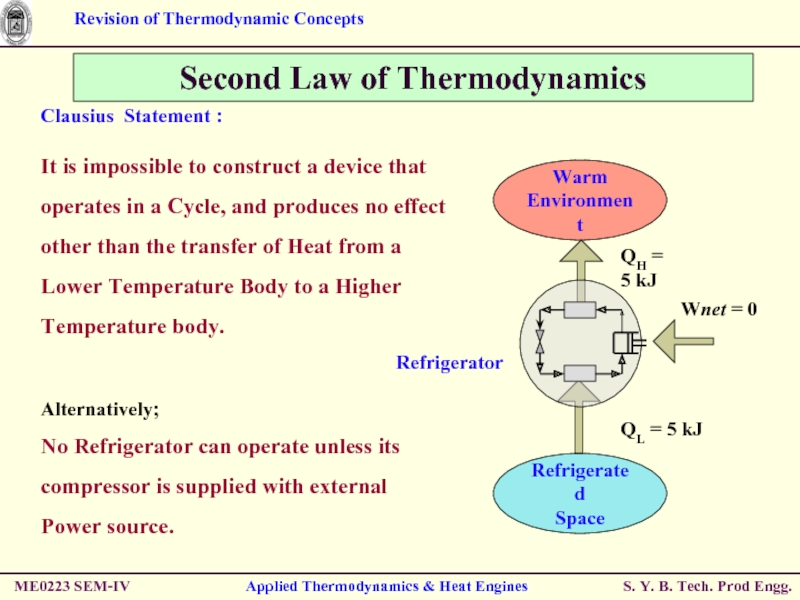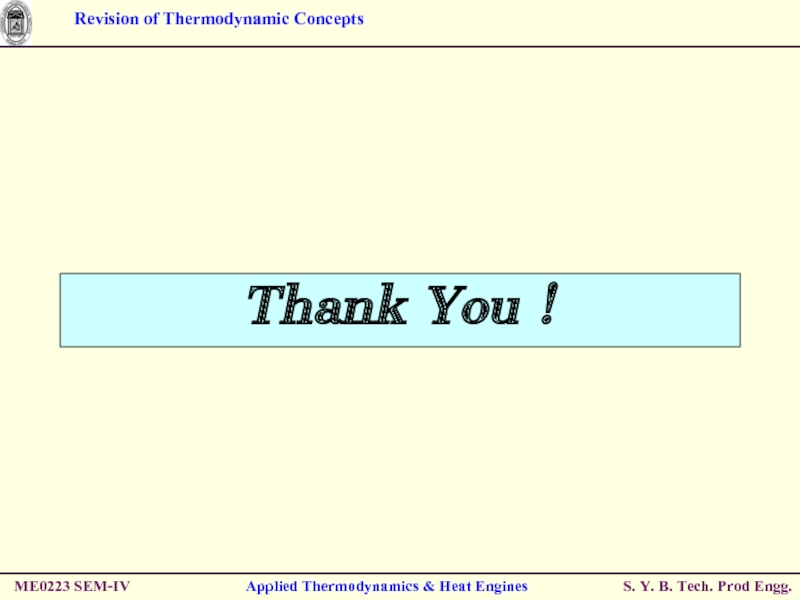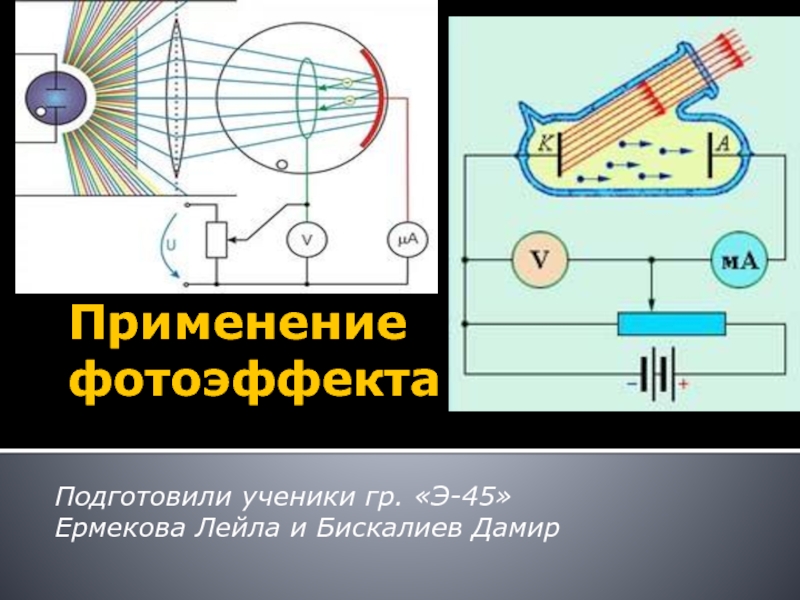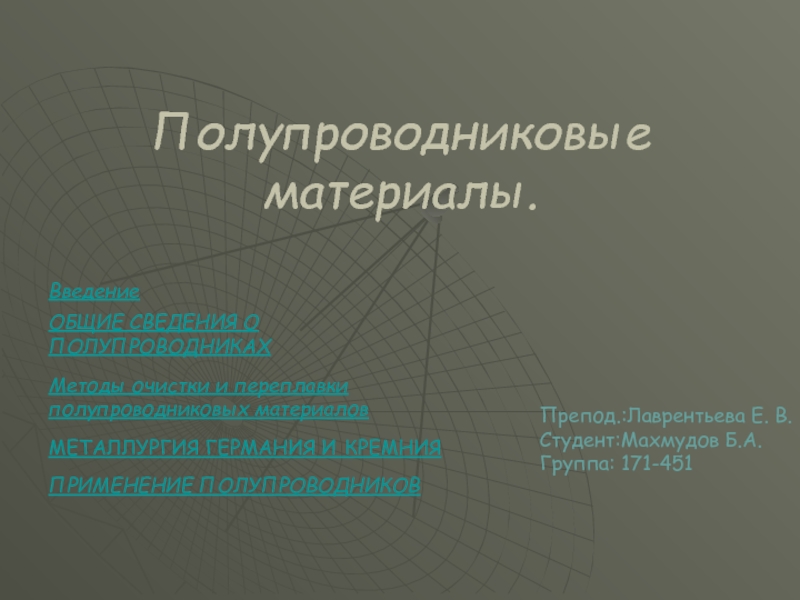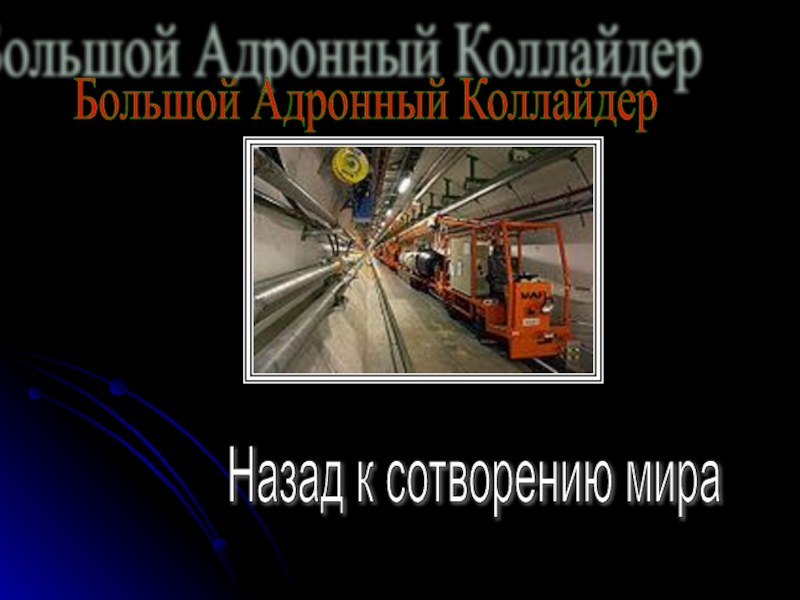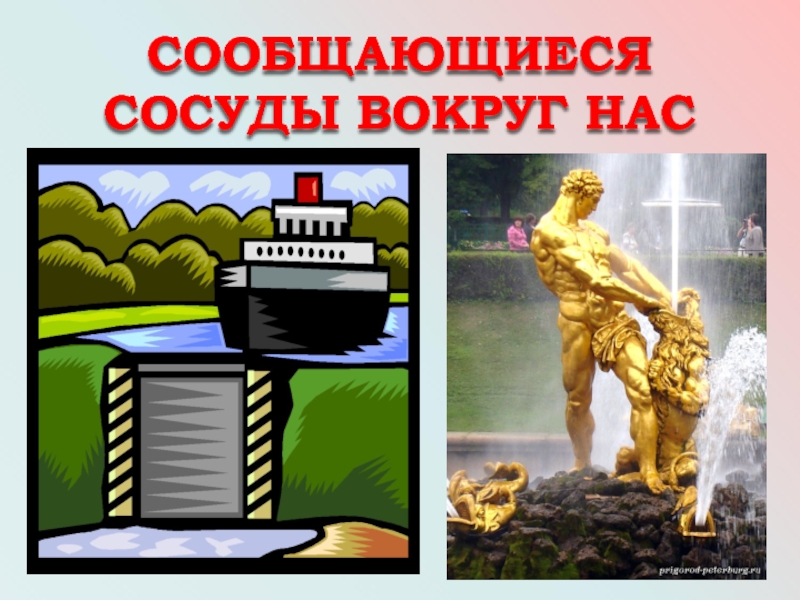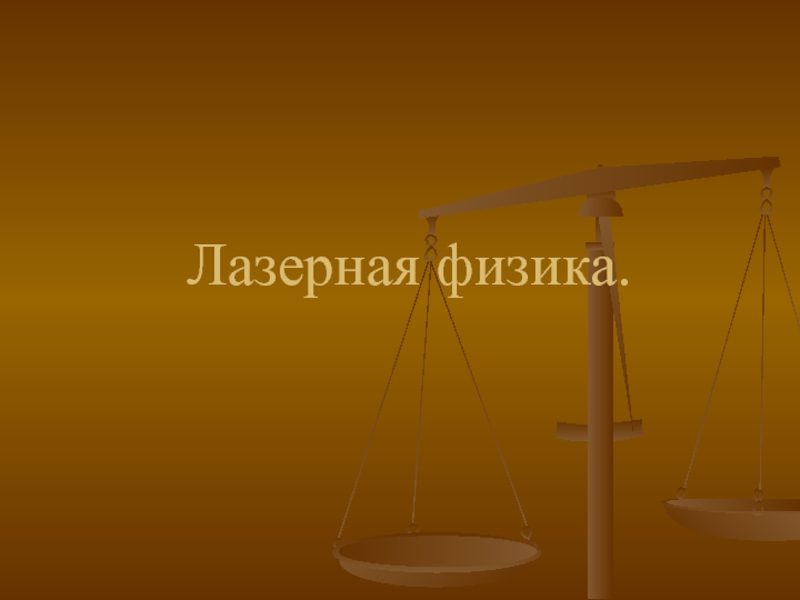S.Y. B. Tech.
ME0223 SEM - IV
Production Engineering
- Главная
- Разное
- Дизайн
- Бизнес и предпринимательство
- Аналитика
- Образование
- Развлечения
- Красота и здоровье
- Финансы
- Государство
- Путешествия
- Спорт
- Недвижимость
- Армия
- Графика
- Культурология
- Еда и кулинария
- Лингвистика
- Английский язык
- Астрономия
- Алгебра
- Биология
- География
- Детские презентации
- Информатика
- История
- Литература
- Маркетинг
- Математика
- Медицина
- Менеджмент
- Музыка
- МХК
- Немецкий язык
- ОБЖ
- Обществознание
- Окружающий мир
- Педагогика
- Русский язык
- Технология
- Физика
- Философия
- Химия
- Шаблоны, картинки для презентаций
- Экология
- Экономика
- Юриспруденция
Revision of Thermodynamic Concepts S презентация
Содержание
- 1. Revision of Thermodynamic Concepts S
- 2. ME0223 SEM-IV Applied Thermodynamics & Heat Engines
- 3. ME0223 SEM-IV Applied Thermodynamics & Heat Engines
- 4. ME0223 SEM-IV Applied Thermodynamics & Heat Engines
- 5. ME0223 SEM-IV Applied Thermodynamics & Heat Engines Close System Also known as CONTROL MASS
- 6. ME0223 SEM-IV Applied Thermodynamics & Heat Engines Close System
- 7. ME0223 SEM-IV Applied Thermodynamics & Heat Engines
- 8. ME0223 SEM-IV Applied Thermodynamics & Heat Engines
- 9. ME0223 SEM-IV Applied Thermodynamics & Heat Engines
- 10. ME0223 SEM-IV Applied Thermodynamics & Heat Engines
- 11. ME0223 SEM-IV Applied Thermodynamics & Heat Engines
- 12. ME0223 SEM-IV Applied Thermodynamics & Heat Engines
- 13. ME0223 SEM-IV Applied Thermodynamics & Heat Engines
- 14. ME0223 SEM-IV Applied Thermodynamics & Heat Engines Path & Process
- 15. ME0223 SEM-IV Applied Thermodynamics & Heat Engines
- 16. ME0223 SEM-IV Applied Thermodynamics & Heat Engines
- 17. ME0223 SEM-IV Applied Thermodynamics & Heat Engines
- 18. ME0223 SEM-IV Applied Thermodynamics & Heat Engines
- 19. ME0223 SEM-IV Applied Thermodynamics & Heat Engines
- 20. ME0223 SEM-IV Applied Thermodynamics & Heat Engines
- 21. ME0223 SEM-IV Applied Thermodynamics & Heat Engines
- 22. ME0223 SEM-IV Applied Thermodynamics & Heat Engines
- 23. ME0223 SEM-IV Applied Thermodynamics & Heat Engines
- 24. ME0223 SEM-IV Applied Thermodynamics & Heat Engines
- 25. Ideal & Real Gas Any equation that
- 26. R is the Constant of Proportionality, given
- 27. Ideal & Real Gas Application of Ideal
- 28. Ideal & Real Gas 3. Benedict –
- 29. ME0223 SEM-IV Applied Thermodynamics & Heat Engines
- 30. ME0223 SEM-IV Applied Thermodynamics & Heat Engines
- 31. ME0223 SEM-IV Applied Thermodynamics & Heat Engines Heat & Work
- 32. ME0223 SEM-IV Applied Thermodynamics & Heat Engines
- 33. ME0223 SEM-IV Applied Thermodynamics & Heat Engines
- 34. ME0223 SEM-IV Applied Thermodynamics & Heat Engines
- 35. ME0223 SEM-IV Applied Thermodynamics & Heat Engines
- 36. ME0223 SEM-IV Applied Thermodynamics & Heat Engines
- 37. ME0223 SEM-IV Applied Thermodynamics & Heat Engines
- 38. Specific Heat Different materials require different
- 39. Specific Heat ME0223 SEM-IV Applied Thermodynamics &
- 40. Specific Heat ME0223 SEM-IV Applied Thermodynamics &
- 41. ME0223 SEM-IV Applied Thermodynamics & Heat Engines
- 42. Specific Heats of Ideal Gases Thus, h
- 43. PdV Work Let the Piston be moving
- 44. PdV Work PdV Work in Different Quasi-Static
- 45. PdV Work PdV Work in Different Quasi-Static
- 46. PdV Work PdV Work in Different Quasi-Static
- 47. PdV Work PdV Work in Different Quasi-Static
- 48. ME0223 SEM-IV Applied Thermodynamics & Heat Engines
- 49. ME0223 SEM-IV Applied Thermodynamics & Heat Engines
- 50. ME0223 SEM-IV Applied Thermodynamics & Heat Engines
- 51. ME0223 SEM-IV Applied Thermodynamics & Heat Engines
- 52. ME0223 SEM-IV Applied Thermodynamics & Heat Engines
- 53. ME0223 SEM-IV Applied Thermodynamics & Heat Engines
- 54. ME0223 SEM-IV Applied Thermodynamics & Heat Engines
- 55. ME0223 SEM-IV Applied Thermodynamics & Heat Engines
- 56. ME0223 SEM-IV Applied Thermodynamics & Heat Engines
- 57. ME0223 SEM-IV Applied Thermodynamics & Heat Engines
- 58. ME0223 SEM-IV Applied Thermodynamics & Heat Engines
- 59. ME0223 SEM-IV Applied Thermodynamics & Heat Engines
- 60. ME0223 SEM-IV Applied Thermodynamics & Heat Engines
- 61. ME0223 SEM-IV Applied Thermodynamics & Heat Engines Second Law of Thermodynamics
- 62. ME0223 SEM-IV Applied Thermodynamics & Heat Engines
- 63. Second Law of Thermodynamics Each component is
- 64. Second Law of Thermodynamics Part of Heat
- 65. Second Law of Thermodynamics QH = Magnitude
- 66. ME0223 SEM-IV Applied Thermodynamics & Heat Engines
- 67. Second Law of Thermodynamics Kelvin – Planck
- 68. Second Law of Thermodynamics ME0223 SEM-IV Applied
- 69. ME0223 SEM-IV Applied Thermodynamics & Heat Engines
- 70. Second Law of Thermodynamics Efficiency of a
- 71. Second Law of Thermodynamics For a Heat Pump, COP is expressed as (COP)HP.
- 72. ME0223 SEM-IV Applied Thermodynamics & Heat Engines
- 73. ME0223 SEM-IV Applied Thermodynamics & Heat Engines
- 74. ME0223 SEM-IV Applied Thermodynamics & Heat Engines Thank You !
Слайд 1ME0223 SEM-IV
Applied Thermodynamics & Heat Engines
Revision of
Thermodynamic Concepts
Applied Thermodynamics &
Слайд 2ME0223 SEM-IV
Applied Thermodynamics & Heat Engines
Outline
System, Surrounding, State.
Path Property, Reversible and
Thermodynamic Work, Heat, Temperature, Thermal Equilibrium.
Zeroth Law, First Law and Second Law of Thermodynamics.
Слайд 3ME0223 SEM-IV
Applied Thermodynamics & Heat Engines
Introduction
Thermodynamics =
(Heat) (Power)
Aspects related to Energy and Energy Transformation
- Power Generation
- Refrigeration
- Relationships among Properties of Matter
Слайд 4ME0223 SEM-IV
Applied Thermodynamics & Heat Engines
System & Surroundings
SYSTEM :
Quantity of matter
SURROUNDINGS :
Mass or region outside the SYSTEM.
BOUNDARY :
Real / Imaginary surface that separates the SYSTEM from SURROUNDINGS.
Слайд 7ME0223 SEM-IV
Applied Thermodynamics & Heat Engines
Open System
Also known as CONTROL VOLUME
e.g.
BOUNDARY of OPEN System is known as
CONTROL SURFACE
Слайд 8ME0223 SEM-IV
Applied Thermodynamics & Heat Engines
Properties of System
Any characteristic of a
e.g. Pressure (P), Volume (V), Temperature (T) and mass (m), etc.
also Viscosity (μ), Electric Resistance (R), Thermal Conductivity (k), etc.
Intensive : Independent on mass of system.
- e.g. Velocity (c), Elevation (h), etc.
Extensive : Dependent on mass of system.
- e.g. Pressure (P), Density (ρ), etc.
Specific : Extensive properties per unit mass.
- e.g. Sp. Vol (v=V/m), Sp. Enthalpy (h=H/m), etc.
Слайд 9ME0223 SEM-IV
Applied Thermodynamics & Heat Engines
State & Equilibrium
Assume a System NOT
Set of properties to completely describe the condition of the system is known as its STATE
STATE 2
Слайд 10ME0223 SEM-IV
Applied Thermodynamics & Heat Engines
State & Equilibrium
EQUILIBRIUM : State of
Thermal Equilibrium :
- NO Temperature Gradient throughout the system.
Mechanical Equilibrium :
- NO Pressure Gradient throughout the system.
Phase Equilibrium :
- System having more than 1 phase.
- Mass of each phase is in equilibrium.
Chemical Equilibrium :
- Chemical composition is constant
- NO reaction occurs.
Слайд 11ME0223 SEM-IV
Applied Thermodynamics & Heat Engines
Path & Process
Any change a system
Series of states through which system passes during the process is known as its PATH.
Слайд 12ME0223 SEM-IV
Applied Thermodynamics & Heat Engines
Path & Process
Quasi-Static
Non-Quasi-Static
Process proceeds in such
It is known as QUASI-STATIC or QUASI-EQUILIBRIUM Process.
Слайд 13ME0223 SEM-IV
Applied Thermodynamics & Heat Engines
Path & Process
NOTE : Process Path
CONTINUOUS line only if it is
having Quasi-Static Process.
Non-Quasi-Static Process is
denoted by a DASHED line.
Слайд 15ME0223 SEM-IV
Applied Thermodynamics & Heat Engines
Cycle
CYCLE :
A system is said to
Hence, for a CYCLE, the INITIAL and the FINAL states are identical.
Слайд 16ME0223 SEM-IV
Applied Thermodynamics & Heat Engines
Reversible / Irreversible Process
Reversible Process :
Surroundings.
i.e. Both, System and Surroundings are returned to their initial
states at the end of the Process.
This is only possible when net Heat and net Work Exchange
between the system and the surroundings is ZERO for the Process.
Pendulum
Quasi-Static Compression and Expansion
Слайд 17ME0223 SEM-IV
Applied Thermodynamics & Heat Engines
Reversible / Irreversible Process
Most of the
i.e. Having taken place, they can not reverse themselves spontaneously and restore the System to its original State.
Слайд 18ME0223 SEM-IV
Applied Thermodynamics & Heat Engines
Reversible / Irreversible Process
Why REVERSIBLE Process
1. Easy to analyse, as System passes through series of Equilibriums.
2. Serve as Idealised Model for actual Processes to be compared for analysis.
3. Viewed as Theoretical Limit for corresponding irreversible one.
Reversible Process leads to the definition of Second Law Efficiency; which is Degree of Approximation (Closeness) to the corresponding Reversible Process.
Слайд 19ME0223 SEM-IV
Applied Thermodynamics & Heat Engines
Temperature
TEMPERATURE :
- No EXACT Definition.
- Broad
- This definition is based on our physiological sensation.
- Hence, may be misleading.
- e.g. Metallic chair may feel cold than Wooden chair; even at SAME temperature.
- Properties of materials change with temperature.
- We can make use of this phenomenon to deduce EXACT level of temperature.
Слайд 20ME0223 SEM-IV
Applied Thermodynamics & Heat Engines
Temperature Scales
Celsius Scale ( ºC )
Fahrenheit Scale ( ºF ) – English System
Kelvin Scale ( K ) – SI System
Rankine Scale ( R ) – English System
Celsius Scale and Fahrenheit Scale – Based on 2 easily reproducible fixed states,
viz. Freezing and Boiling points of water.
i.e. Ice Point and Steam Point
Thermodynamic Temperature Scale – Independent of properties of any substance.
- In conjunction with Second Law of Thermodynamics
Thermodynamic Temperature Scale – Kelvin Scale and Rankine Scale.
Слайд 21ME0223 SEM-IV
Applied Thermodynamics & Heat Engines
Hot End
Regenerator
Pulse Tube
Temperature Scales
T ( R ) = T ( ºF ) + 459.67
T ( ºF ) = 1.8 T ( ºC ) + 32
T ( R ) = 1.8 T ( K )
Conversion Factors :
Слайд 22ME0223 SEM-IV
Applied Thermodynamics & Heat Engines
Pressure
Definition : Normal Force exerted by
SI Units :
1 Pa = 1 N/m2
1 kPa = 103 Pa
1 MPa = 106 Pa = 103 kPa
1 bar = 105 Pa = 0.1 MPa = 100 kPa
1 atm = 101325 Pa = 101.325 kPa = 1.01325 bar
1 kgf/cm2 = 9.81 N/m2 = 9.81 X 104 N/m2 = 0.981 bar = 0.9679 atm
English Units :
psi = Pound per square inch ( lbf/in2)
1 atm = 14.696 psi
1 kgf/cm2 = 14.223 psi
Слайд 23ME0223 SEM-IV
Applied Thermodynamics & Heat Engines
Pressure
Absolute Pressure : Actual Pressure at
Measured relative to absolute vacuum i.e. absolute zero pressure.
Pressure Gauges are generally designed to indicate ZERO at local atmospheric pressure.
Hence, the difference is known as Gauge Pressure.
i.e. P (gauge) = P (abs) – P (atm)
Pressure less than local atmospheric pressure is known as Vacuum Pressure.
i.e. P (vacuum) = P (atm) – P (abs)
Слайд 24ME0223 SEM-IV
Applied Thermodynamics & Heat Engines
Pressure
P (gauge) = P (abs) –
P (vacuum) = P (atm) – P (abs)
Слайд 25Ideal & Real Gas
Any equation that relates the Pressure, Temperature and
This equation is called Ideal Gas Equation of State.
The hypothetical gas that obeys this law, is known as Ideal Gas.
ME0223 SEM-IV
Applied Thermodynamics & Heat Engines
Слайд 26R is the Constant of Proportionality, given by the unit (
Ideal & Real Gas
Now, V (Total Volume) = m.v (Sp. Vol.)
Behaviour of a Real Gas approaches to the that of an Ideal Gas, at low densities.
Thus, at low pressures and high temperatures, the density of the gas decreases and the gas approaches to Ideal Gas.
ME0223 SEM-IV
Applied Thermodynamics & Heat Engines
Слайд 27Ideal & Real Gas
Application of Ideal Gas Equation is limited to
Therefore, it is required to have more accurate predictions for a substance, over a larger region and without limitations.
Several equations are proposed by various scientists and researchers.
This equation takes into account :
Intermolecular attraction forces.
Volume occupied by the molecules themselves.
ME0223 SEM-IV
Applied Thermodynamics & Heat Engines
Слайд 28Ideal & Real Gas
3. Benedict – Webb - Rubin Equation of
ME0223 SEM-IV
Applied Thermodynamics & Heat Engines
Слайд 29ME0223 SEM-IV
Applied Thermodynamics & Heat Engines
Thermal Equilibrium
Thermal Equilibrium : NO change
NO Temperature Gradient.
When a body is brought in contact with another body at different temperature, heat is transferred from the body at higher temperature to that with lower one; till both attain a THERMAL EQUILIBRIUM.
Слайд 30ME0223 SEM-IV
Applied Thermodynamics & Heat Engines
Heat & Work
Energy can cross the
2. Work
Heat is a form of Energy transferred between 2 Systems ( or a System and the surroundings ) by virtue of Temperature Difference (∆T).
i.e. Heat is Energy in TRANSITION.
Process involving no Heat Exchange is known as ADIABATIC Process.
Слайд 32ME0223 SEM-IV
Applied Thermodynamics & Heat Engines
Heat & Work
Energy Transfer in from
CONDUCTION : Transfer of Energy from a more energetic particle of a substance
to the adjacent less energetic one, as a result of interaction
between them.
CONVECTION : Transfer of Energy between a solid surface and the adjacent fluid
that is in motion. It involved both, the combined effect of
conduction and fluid motion.
RADIATION : Transfer of Energy due to the emission of electromagnetic waves.
Слайд 33ME0223 SEM-IV
Applied Thermodynamics & Heat Engines
Heat & Work
WORK : Work is
Denoted by J or kJ.
Слайд 34ME0223 SEM-IV
Applied Thermodynamics & Heat Engines
Heat & Work
Sp. Work = Work
w = W/m ( J/kg )
Power = Work per unit Time
P = W/time ( J/sec OR W )
Sign Convention :
Heat Transfer TO a System : + ve
Heat Transfer FROM a System : - ve
Work done BY a System : + ve
Work done ON a System : - ve
Слайд 35ME0223 SEM-IV
Applied Thermodynamics & Heat Engines
Heat & Work
Similarities between HEAT &
Both are recognised at the Boundary of the System, as they cross the Boundary. Hence both are Boundary Phenomena.
System possesses Energy, but neither Heat nor Work.
Both are associated with Process, not State. Heat and Work have NO meaning at a State.
Both are Path Functions.
Path Function : Magnitude depends on the Path followed during the Process, as
well as the End States.
Point Function : Magnitude depends on State only, and not on how the System
approaches that State.
Слайд 36ME0223 SEM-IV
Applied Thermodynamics & Heat Engines
Heat & Work
Path Functions have Inexact
Thus, a differential amount of Heat or Work is represented as δQ or δW; in stead of dQ or dW.
Properties, on the other hand, are Point Functions, and have Exact Differentials, designated by symbol d.
Слайд 37ME0223 SEM-IV
Applied Thermodynamics & Heat Engines
e.g. Small change in Volume, is
Heat & Work
Thus, Volume change during Process 1 – 2 is always =
(Volume at State 2) minus (Volume at State 1).
Regardless of path followed.
HOWEVER, total Work done during Process 1 – 2 is;
i.e. Total Work is obtained by following the Process Path and adding the differential amounts of Wok (δW) done along it.
Integral of δW is ≠ ( W2 – W1 ).
Слайд 38Specific Heat
Different materials require different amount of Energy for their temperatures
Hence, it is required to define a Property to compare the ENERGY STORAGE CAPACITY of different substances.
This Property is known as SPECIFIC HEAT.
ME0223 SEM-IV
Applied Thermodynamics & Heat Engines
Слайд 39Specific Heat
ME0223 SEM-IV
Applied Thermodynamics & Heat Engines
DEFINITION :
The Energy required to
Слайд 40Specific Heat
ME0223 SEM-IV
Applied Thermodynamics & Heat Engines
CP is always greater than
Слайд 41ME0223 SEM-IV
Applied Thermodynamics & Heat Engines
Hence, CV is change in Internal
Specific Heat
Consider a System with fixed mass and undergoing Const. Vol. Process (expansion / compression).
First Law of Thermodynamics → ein – eout = ∆esystem
Since it is a Const. mass System;
Net amount of Change of Energy = Change in Internal Energy (u).
i.e. δein – δeout = du
Hence, CP is change in Enthalpy of a substance per unit change in temperature at constant Pressure.
Слайд 42Specific Heats of Ideal Gases
Thus, h = u + RT
dh =
ME0223 SEM-IV
Applied Thermodynamics & Heat Engines
Слайд 43PdV Work
Let the Piston be moving from Thermodynamic Equilibrium State 1
Let the values at any intermediate Equilibrium State is given by P and V.
For an Infinitesimal displacement, dL, the Infinitesimal Work done is;
Similarly, for Process 1 – 2; we can say that;
Volume
P1
P2
V1
V2
dW = F * dL = P*A*dL = PdV
ME0223 SEM-IV
Applied Thermodynamics & Heat Engines
Слайд 44PdV Work
PdV Work in Different Quasi-Static Processes :
ME0223 SEM-IV
Applied Thermodynamics &
Слайд 45PdV Work
PdV Work in Different Quasi-Static Processes :
ME0223 SEM-IV
Applied Thermodynamics &
Слайд 46PdV Work
PdV Work in Different Quasi-Static Processes :
ME0223 SEM-IV
Applied Thermodynamics &
Слайд 47PdV Work
PdV Work in Different Quasi-Static Processes :
Pressure
ME0223 SEM-IV
Applied Thermodynamics &
Слайд 48ME0223 SEM-IV
Applied Thermodynamics & Heat Engines
Zeroth Law of Thermodynamics
STATEMENT :
If two
This statement seems to be very simple.
However, this can not be directly concluded from the other Laws of Thermodynamics.
It serves as the basis of validity of TEMPERATURE measurement.
Слайд 49ME0223 SEM-IV
Applied Thermodynamics & Heat Engines
Zeroth Law of Thermodynamics
By replacing the
Two bodies are in Thermal Equilibrium, if both have same TEMPERATURE, regarding even if they are not in contact with each other.
i.e. Temp (A) measured by Thermometer and is known.
(A) is in Thermal Equilibrium with (B).
Then, Temp (B) is also known, even not in contact with Thermometer.
Слайд 50ME0223 SEM-IV
Applied Thermodynamics & Heat Engines
Zeroth Law of Thermodynamics
- Formulated and
However, its significance is realised after half a century after formation of First and
Second Laws of Thermodynamics.
- Hence named as Zeroth Law of Thermodynamics.
Слайд 51ME0223 SEM-IV
Applied Thermodynamics & Heat Engines
First Law of Thermodynamics
Also known as
Important due to its ability to provide a sound basis to study between different forms of Energy and their interactions.
STATEMENT :
Energy can neither be created nor destroyed during a process; but can be only converted from one form to another.
m g Δz = ½ m ( v12 - v22 )
PE = 7 kJ
KE = 3 kJ
Слайд 52ME0223 SEM-IV
Applied Thermodynamics & Heat Engines
First Law of Thermodynamics
This forms the
Net change ( increase / decrease ) in the total Energy of the System during a Process
= Difference between Total Energy entering and Total Energy leaving the System during that Process.
Слайд 53ME0223 SEM-IV
Applied Thermodynamics & Heat Engines
Second Law of Thermodynamics
Hot cup of
Energy lost by coffee = Energy gained by Surroundings.
Here, First Law of Thermodynamics is satisfied.
HOWEVER, converse is NOT true.
i.e. Taking out Heat Energy from Surroundings ≠ Coffee getting hot.
Still, First Law of Thermodynamics is satisfied !
Слайд 54ME0223 SEM-IV
Applied Thermodynamics & Heat Engines
Second Law of Thermodynamics
Heating of a
Electric Energy supplied to the heater = Energy transferred to the Surroundings ( room air ).
Here, First Law of Thermodynamics is satisfied.
HOWEVER, converse is NOT true.
Transferring Heat to the wire ≠
Equivalent amount of Electric Energy generated in wire.
Still, First Law of Thermodynamics is satisfied !
Слайд 55ME0223 SEM-IV
Applied Thermodynamics & Heat Engines
Second Law of Thermodynamics
Paddle Wheel mechanism
Paddle wheel rotates as mass falls down and stirs the fluid inside the container.
Decrease in Potential Energy of the mass =
Increase in Internal Energy of the fluid.
Here, First Law of Thermodynamics is satisfied.
HOWEVER, converse is NOT true.
Transferring Heat to the Paddle Wheel ≠
Raising the mass.
Still, First Law of Thermodynamics is satisfied !
Слайд 56ME0223 SEM-IV
Applied Thermodynamics & Heat Engines
Second Law of Thermodynamics
From these day
Satisfying the First Law of Thermodynamics does not ensure for a Process to occur actually.
Processes proceed in certain direction; but may not in Reverse direction.
First Law of Thermodynamics has no restriction on the DIRECTION of a Process to occur.
This inadequacy of the First Law of Thermodynamics; to predict whether the Process can occur is solved by introduction of the Second Law of Thermodynamics.
Слайд 57ME0223 SEM-IV
Applied Thermodynamics & Heat Engines
SIGNIFICANCE :
Second Law of Thermodynamics is
It also asserts that Energy has quantity as well as Quality.
It helps to determine the Degree of Degradation of Energy during the Process.
It is also used to determine the Theoretical Limits for the performance of the commonly used engineering systems, such as Heat Engines and Refrigerators.
Second Law of Thermodynamics
Слайд 58ME0223 SEM-IV
Applied Thermodynamics & Heat Engines
Thermal Energy Reservoir :
Hypothetical body with
( mass x Sp. Heat ) that can supply or absorb finite amount of Heat without undergoing change in Temperature.
Second Law of Thermodynamics
e.g. ocean, lake, atmosphere, two-phase system, industrial furnace, etc.
Слайд 59ME0223 SEM-IV
Applied Thermodynamics & Heat Engines
Second Law of Thermodynamics
No Work
Heat
From such
Work can be converted to Heat.
BUT, Converting Heat to Work requires special devices.
These devices are known as Heat Engines.
Слайд 60ME0223 SEM-IV
Applied Thermodynamics & Heat Engines
Second Law of Thermodynamics
Characteristics of Heat
They receive the Heat from High-Temp Reservoir ( i.e. Source )
(e.g. Solar Energy, Oil Furnace, Nuclear Reactor, etc.).
They convert part of this Heat to Work
( Usually in form of rotating shaft ).
They reject the remaining Heat to Low-Temp Reservoir ( i.e. Sink )
(e.g. Atmosphere, River, etc.)
They operate on a CYCLE.
Heat Engines are generally Work – Producing devices,
e.g. Gas Turbines, I.C. Engines, Steam Power Plants, etc.
Слайд 62ME0223 SEM-IV
Applied Thermodynamics & Heat Engines
Second Law of Thermodynamics
Turbine
Boiler
Condenser
Pump
Win
Wout
SOURCE
(Furnace)
SINK
(Atm. Air)
Qin
Qout
STEAM POWER
Can Qout be eliminated ?
ANS : NO.
Without a Heat Rejection Process, the Cycle can not be completed.
Слайд 63Second Law of Thermodynamics
Each component is an OPEN SYSTEM
However, as a
Thus,
Worknet,out = Qout - Qin
Слайд 64Second Law of Thermodynamics
Part of Heat output that is converted to
Слайд 65Second Law of Thermodynamics
QH = Magnitude of Heat Transfer
Source at temperature TH
QL = Magnitude of Heat Transfer
between cyclic device and
Sink at temperature TL
Worknet,out = QH - QL
Слайд 66ME0223 SEM-IV
Applied Thermodynamics & Heat Engines
Second Law of Thermodynamics
Heat Engine must
Thus, a Heat Engine must exchange Heat with at least TWO Reservoirs for continuous operation.
This forms the basis for the Kelvin – Planck expression of the Second Law of Thermodynamics.
Слайд 67Second Law of Thermodynamics
Kelvin – Planck Statement :
It is impossible for
Alternatively;
No Heat Engine can have a thermal efficiency of 100 per cent.
ME0223 SEM-IV
Applied Thermodynamics & Heat Engines
Слайд 68Second Law of Thermodynamics
ME0223 SEM-IV
Applied Thermodynamics & Heat Engines
REFRIGERATOR / HEAT
Heat is always transferred from High Temperature to Low Temperature region.
The reverse Process can not
occur on itself.
Transfer of Heat from
Low Temperature region to High Temperature one requires special devices, known as REFRIGERATORS.
Слайд 69ME0223 SEM-IV
Applied Thermodynamics & Heat Engines
Second Law of Thermodynamics
REFRIGERATOR / HEAT
Слайд 70Second Law of Thermodynamics
Efficiency of a Refrigerator is expressed in terms
Thus, COPR can be > 1
Слайд 72ME0223 SEM-IV
Applied Thermodynamics & Heat Engines
Second Law of Thermodynamics
Clausius Statement :
It
Alternatively;
No Refrigerator can operate unless its compressor is supplied with external Power source.
Слайд 73ME0223 SEM-IV
Applied Thermodynamics & Heat Engines
Second Law of Thermodynamics
=
This Proves that;
Violation
Converse is also True.
